
Driving a time attack car 800 miles to and from the Gridlife Streets Special TrackBattle should have been a terrible time.
Especially given that the car posted the third-fastest time in its class with Jackie Ding behind the wheel — on its first outing, no less, just days after an engine swap.
The trip south and back should have been uncomfortable, cold, harsh, loud, and generally unpleasant. Mechanical failure was practically expected, and the journey could have even been borderline dangerous given that we would be slicing through uncharacteristic waves of rain in Southern California’s desert to arrive at Willow Springs International Raceway.
But the drive wasn’t any of these things.
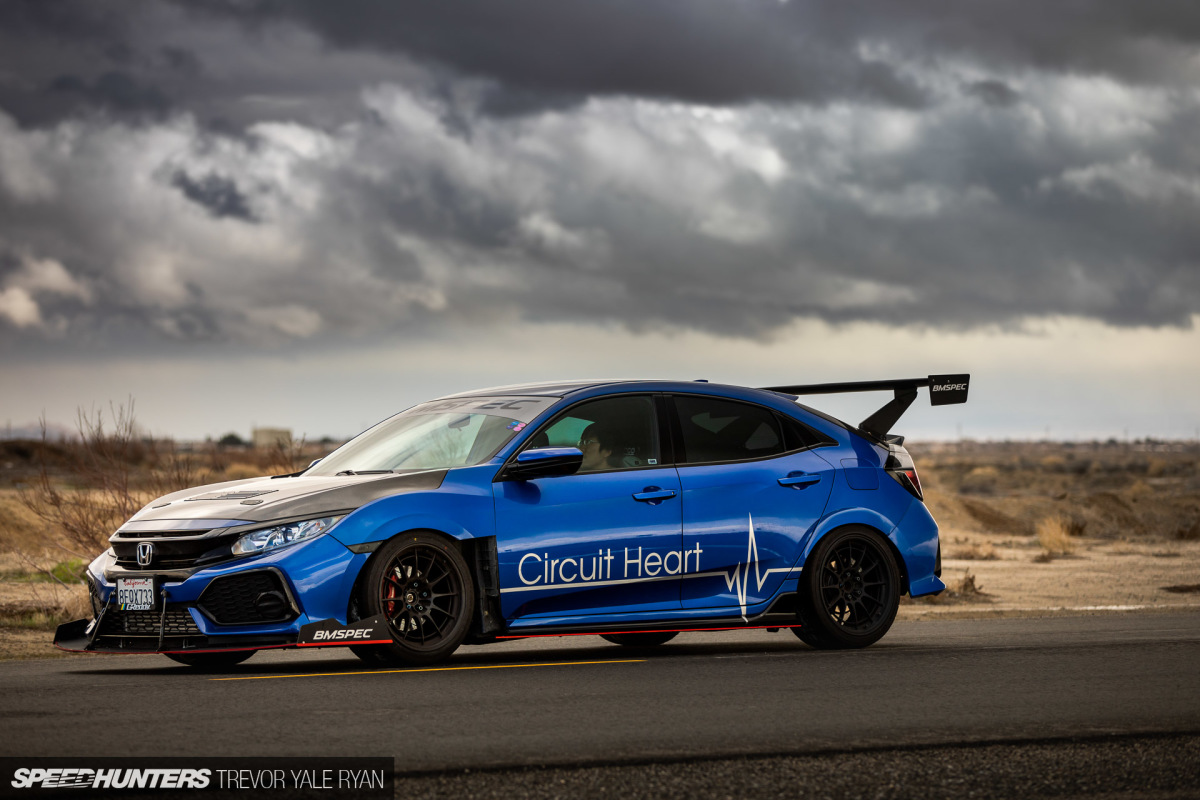
This makes sense, too, as the car is BMSPEC’s test mule, a 2018 Honda Civic Sport Hatchback. If you aren’t familiar, Brian Ma started BMSPEC with the idea that you shouldn’t have to give up practicality or aesthetics to enjoy racing products on your car.

I’ll get back to this later, but from the quick winding backroads around my house to the long and arduous straight shot towards LA that is California’s Highway 5, everything was remarkably unremarkable.
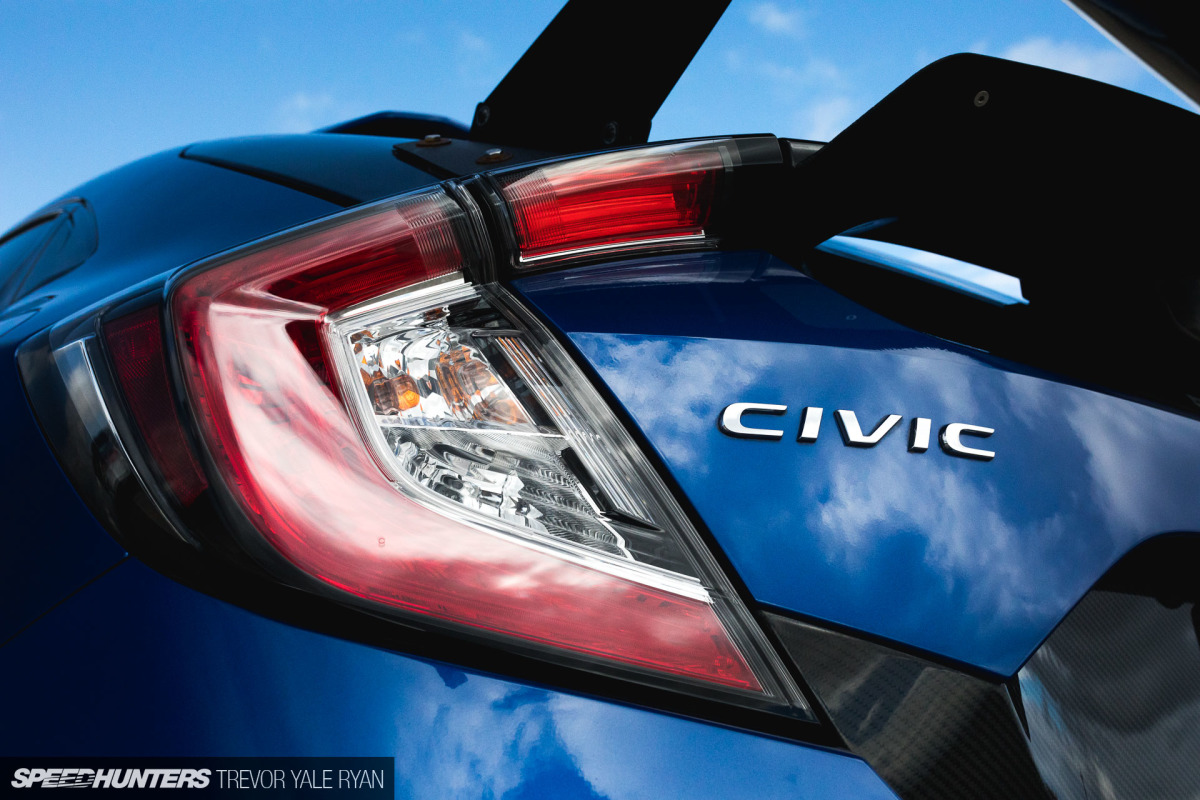

That isn’t a dig at the car, either, as at the end of the day it’s just a new Honda, one that Brian has modified as little as is reasonable while still keeping it competitive.
Still, the Civic, which is aptly named Circuit Heart — technically Circuit Heart II as the original Mazda3 Brian build has long since been parted out — has been under the knife consistently since Brian took ownership of the vehicle in July, 2018.
The SpecsJust two days before our trip, BMSPEC was wrapping up a last-minute Si swap, making use of a stock L15B7 engine.
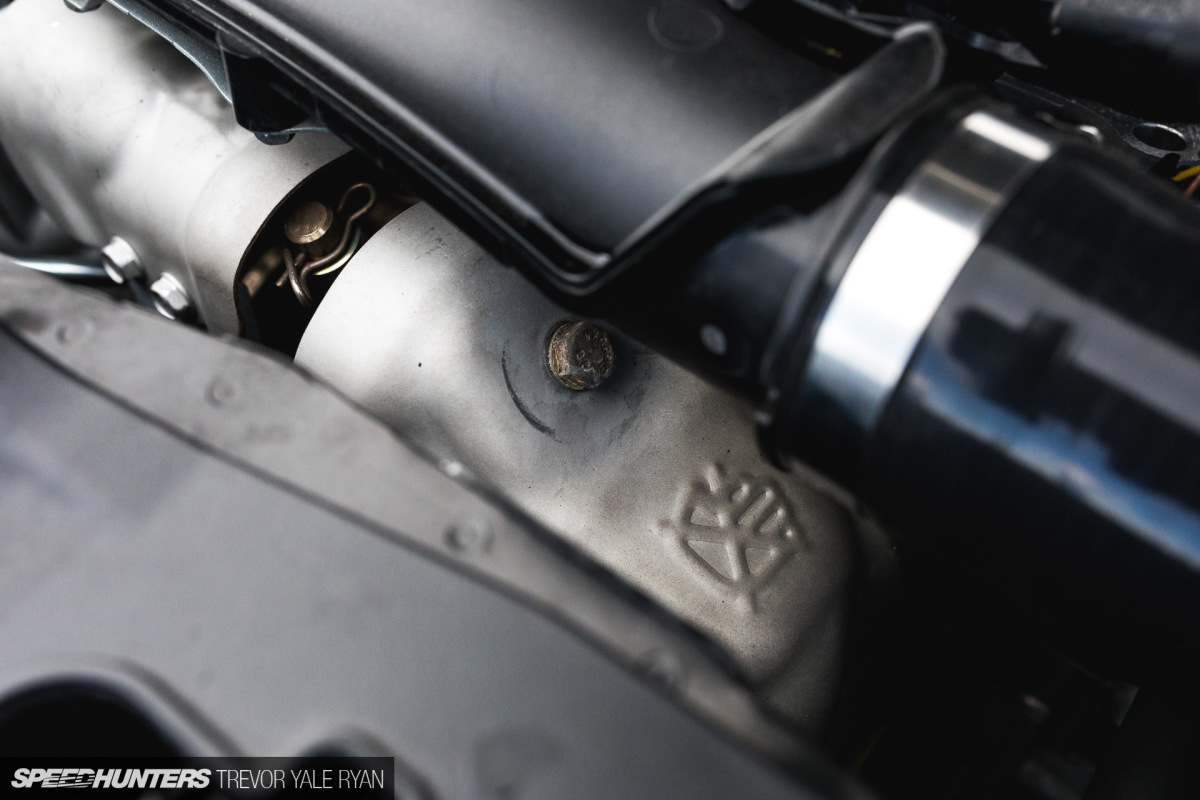
The engine is bolted into place with Hasport motor mounts, and the details of the swap were buttoned up the morning of our trip to SoCal. Surprisingly, the only issue that surfaced from the swap was that the reverse lockout wouldn’t work.
While the internals of the 1.5L remain as they came from the factory, Brian opted to install a larger W1 turbocharger from 27WON Performance out of Vancouver, Washington. Under the hood, this area of the car still appears entirely stock, but Brian also made use of a 27WON Performance down-pipe which still utilizes a catalytic converter. To pull air into the boosted L15B7, a PRL Motorsports short ram intake and front-mount intercooler are used.
As much as the engine feels fairly stock when climbing a hill at low RPM, it certainly doesn’t sound that way anymore…

At any rate, power should be significantly higher after a tune, especially on the top end with the peaky turbo, but on the street the car almost feels underpowered. Frankly, it is, as it’s a 1.5L Honda at the end of the day, and still running on the base map.
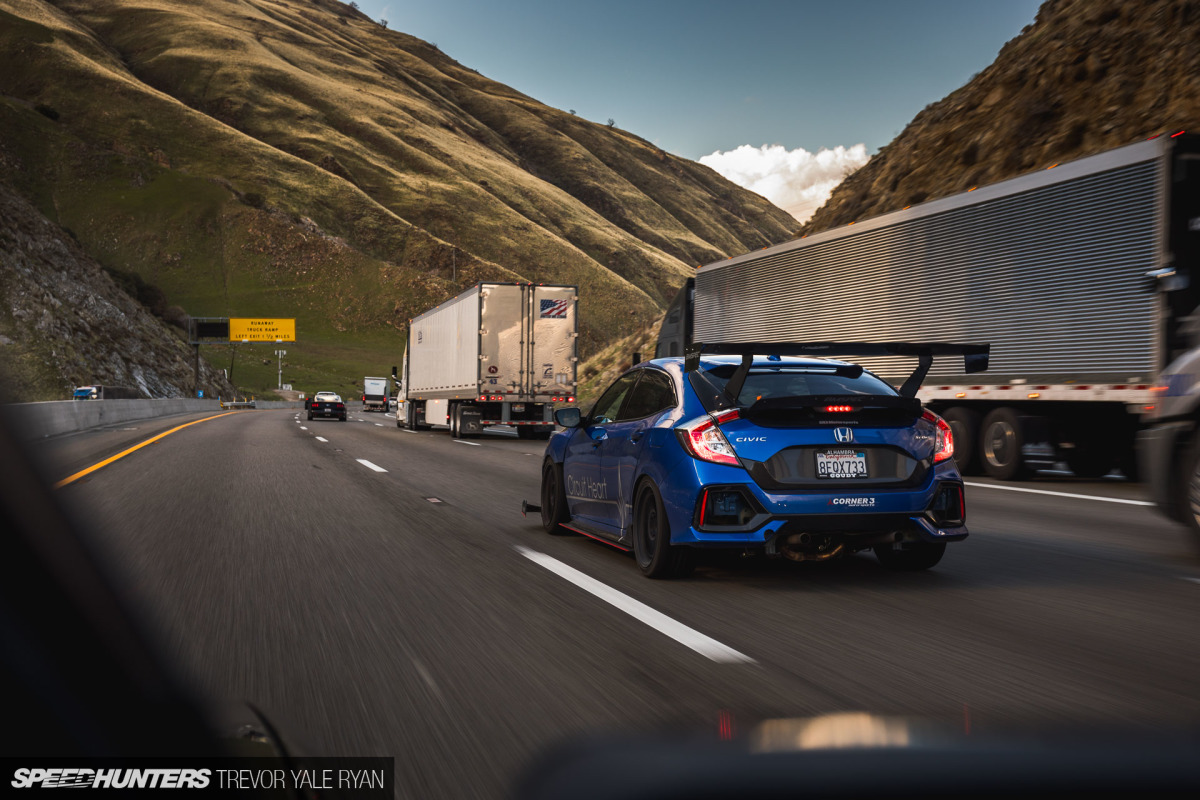
The factory 6-speed manual gearbox remains, but the rest of the drivetrain has been upgraded with a Clutch Masters FX725 twin-disc clutch and MFactory 1.5-way LSD. It’s easy to stall, but once you’re used to the feel driving through traffic or a crowded city street is a non-issue, and cruising on the freeway is expectedly the same as any other car.

The Civic sits on BC Racing BR-series coilovers with Swift springs rated 10kg in the front and 14kg in the rear. The front roll bar has been deleted — the softer setup without one is more forgiving on the limit, and as the GTA rulebook technically allows this Circuit Heart is also able to save a few pounds — and the setup is completed by BMSPEC front camber plates and K-Tuned rear toe links.
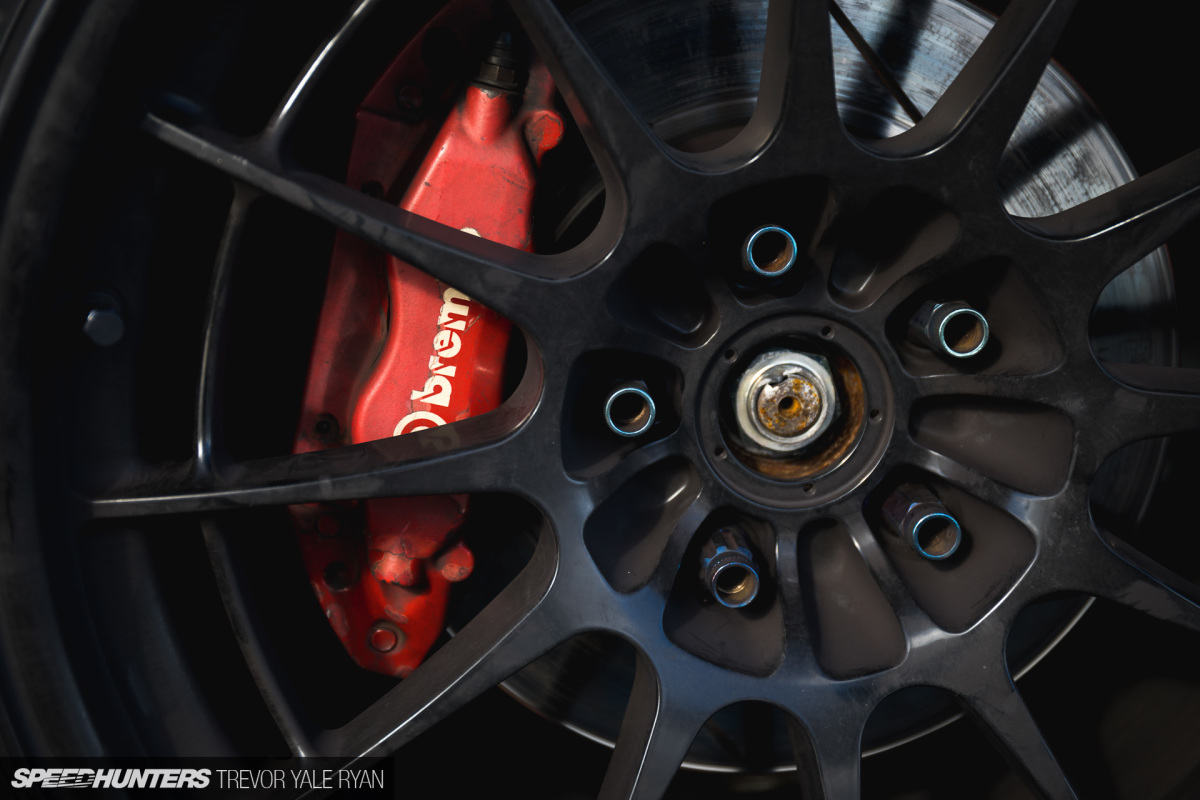
To slow the car at speed, Brembo DC5 Integra Type R front calipers were installed using StopTech S2000 front rotors. Out back, the brake setup remains stock.
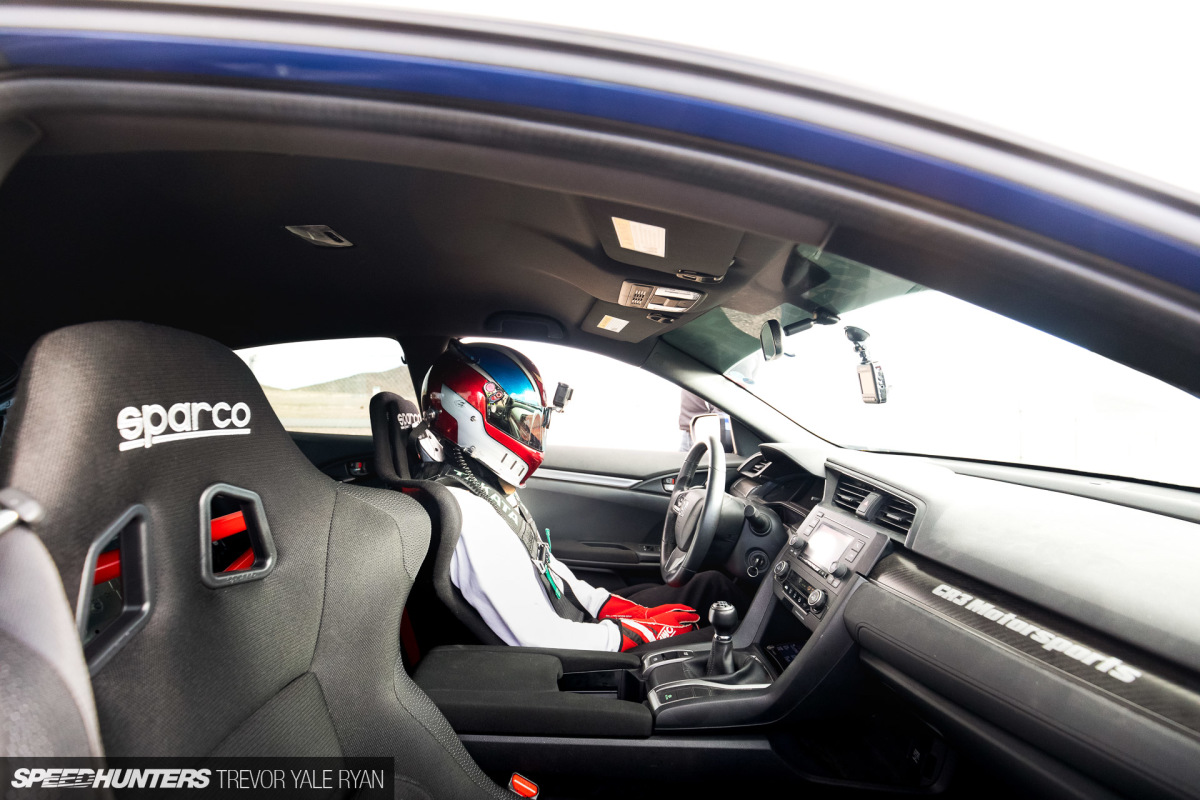
While the BC Racing suspension and the Brembos were used at the Gridlife TrackBattle, Brian says he’s going to replace them with a JRZ RS Pro 2-way setup and a StopTech C43 Competition big brake kit in short order.

The Civic wears Enkei NT03+M wheels which measure 18×10.5-inch in the front and 18×9.5-inch out back. Rubber used at the shakedown event was Yokohama Advan A052 (265/35R18) for the fronts and AD08R (255/35R18) for the rears.
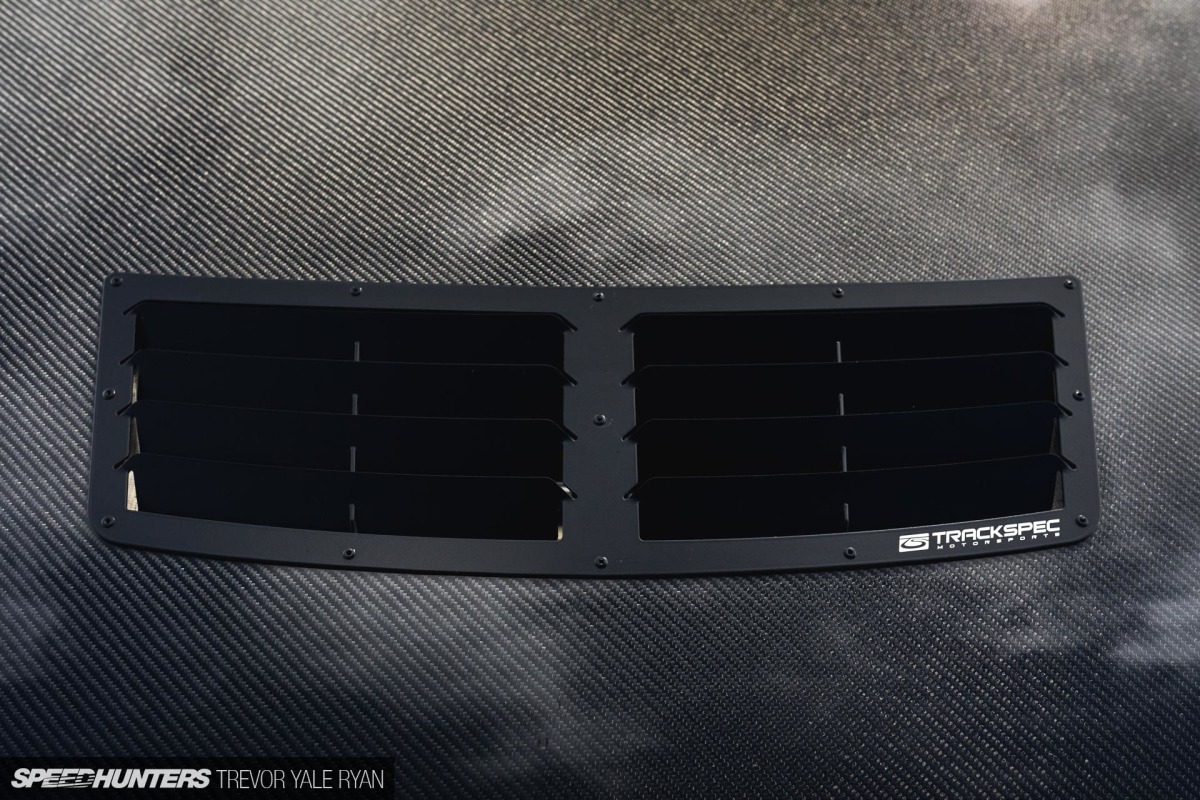
Non-BMSPEC parts which help save weight include lightened front and rear bumpers and a Seibon Carbon OEM-style hood, as well as their FK8 replacement hatch. You’ll also notice a TrackSpec Motorsports louvered hood vent for extra air flow around the engine bay.
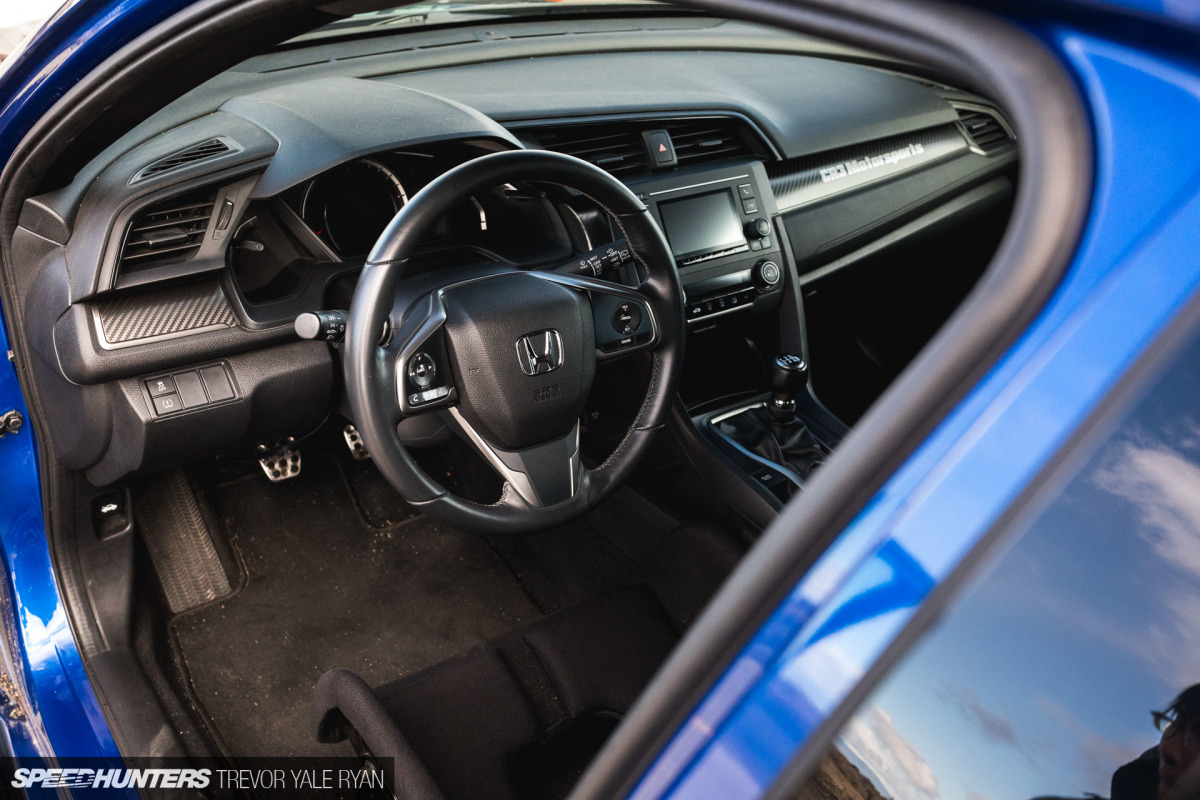
The interior is stripped past the B-pillar, but the factory dash and all of the associated electronics remain. You can connect to Bluetooth, play some tunes, and kick back for the ride like any proper Honda ought to allow.
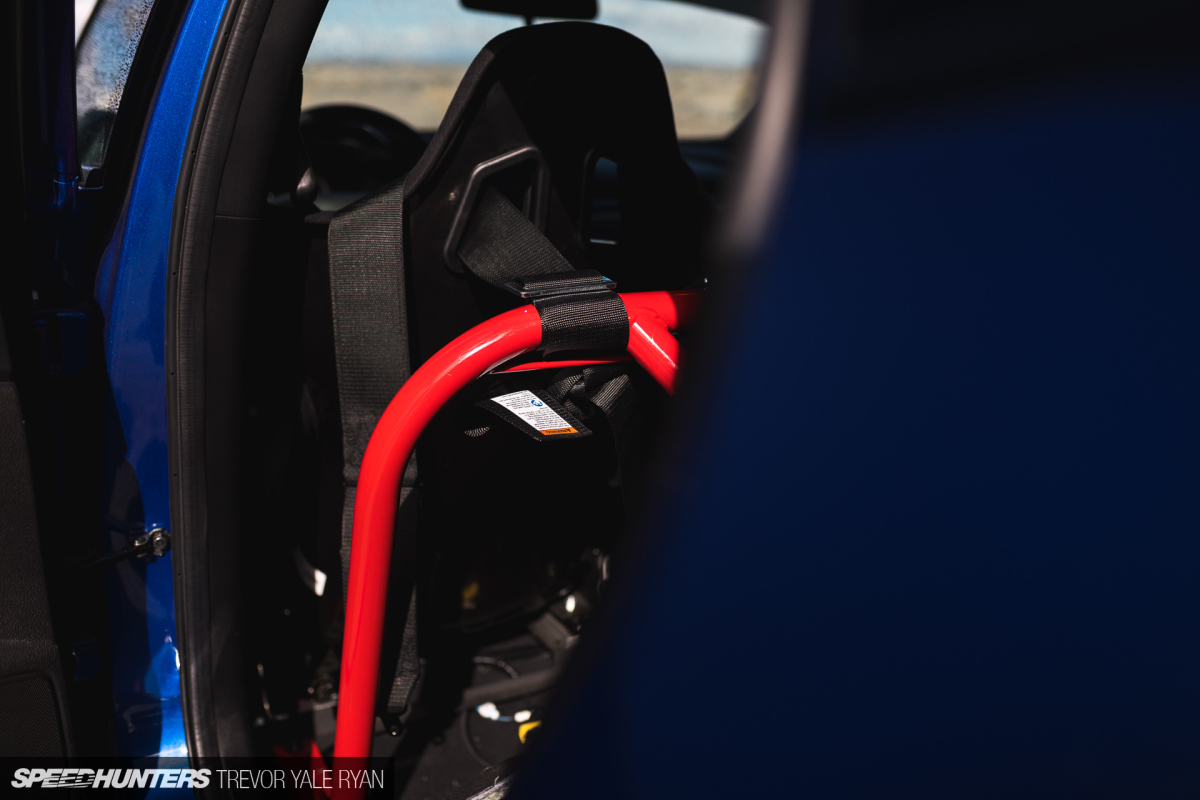
While I made use of the OEM three-point seatbelt on the street, a harness bar was installed for track use. Brian says he’s surprised this harness brace alone is time attack legal, but the rules are the rules. For the time being, the front half of the car remains more streetable without a fully integrated cage anyway.
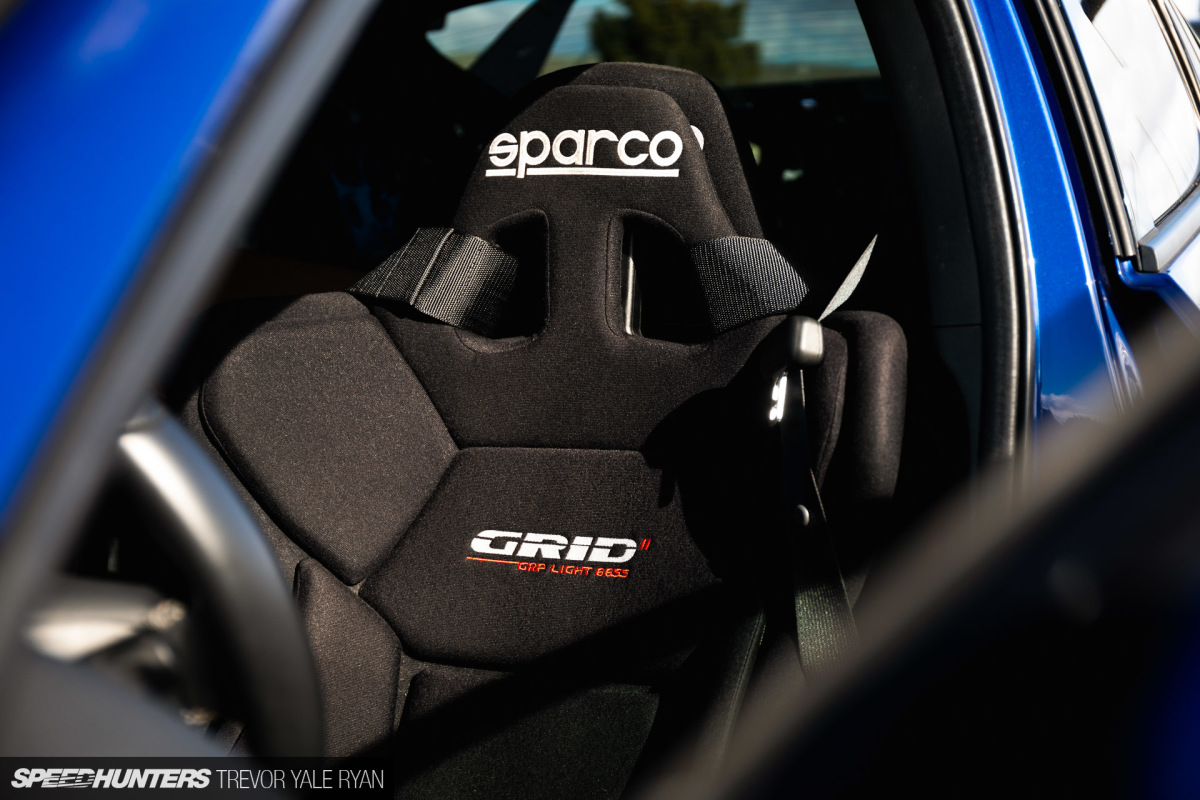
The Sparco Grid II wasn’t terrible for the drive down, but it’s not as comfortable as the Sparco Fighter that Brian’s wife convinced him to install on the passenger side. Still, for 800 miles in a bucket seat my back was A-ok.

So, without anything too extreme going on under the skin and with barely 200hp on tap, how was Circuit Heart able to pull off one of the fastest times in its class at Streets of Willows?
Aero Advantage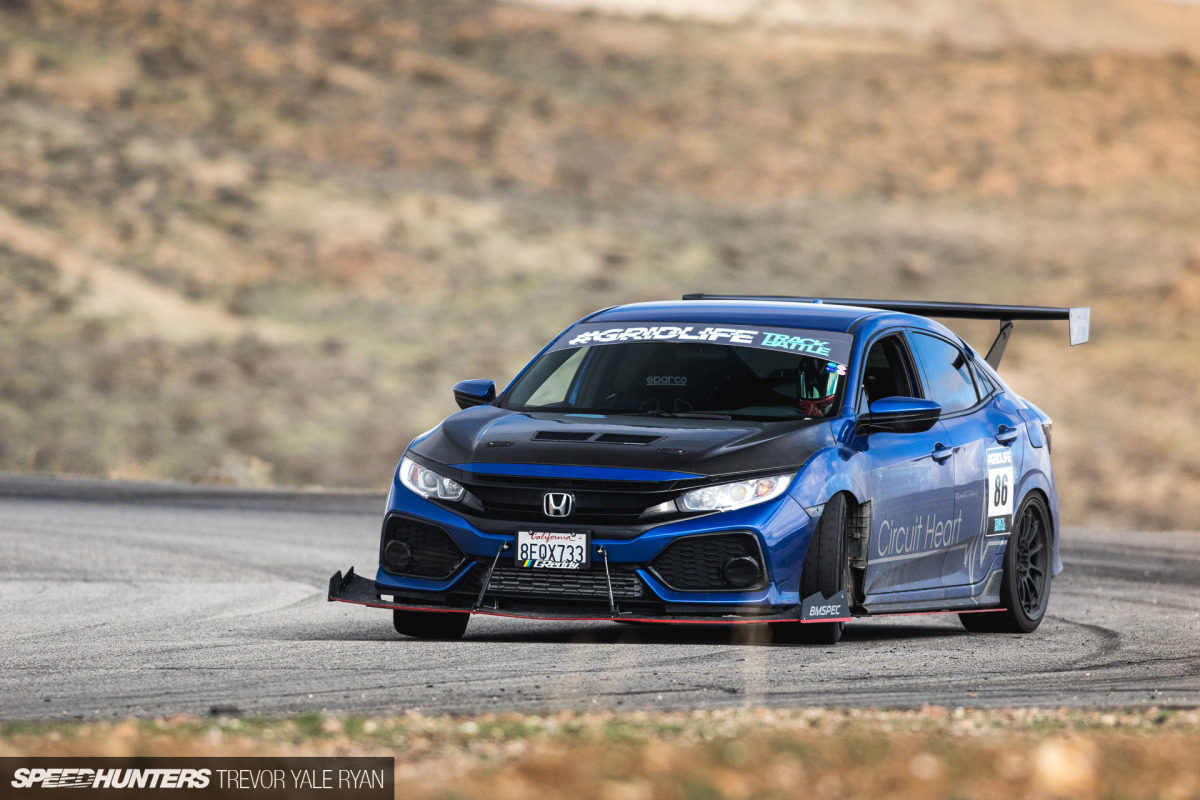
The well-known secret to quick laps with a slow car is to simply never slow down. But as anyone who’s pushed a momentum car knows, eventually — or sometimes quite suddenly — you’ll find where grip runs out.
It’s right on this limit that Circuit Heart really shines. And that’s to be expected considering BMSPEC’s bread and butter is making aero parts.
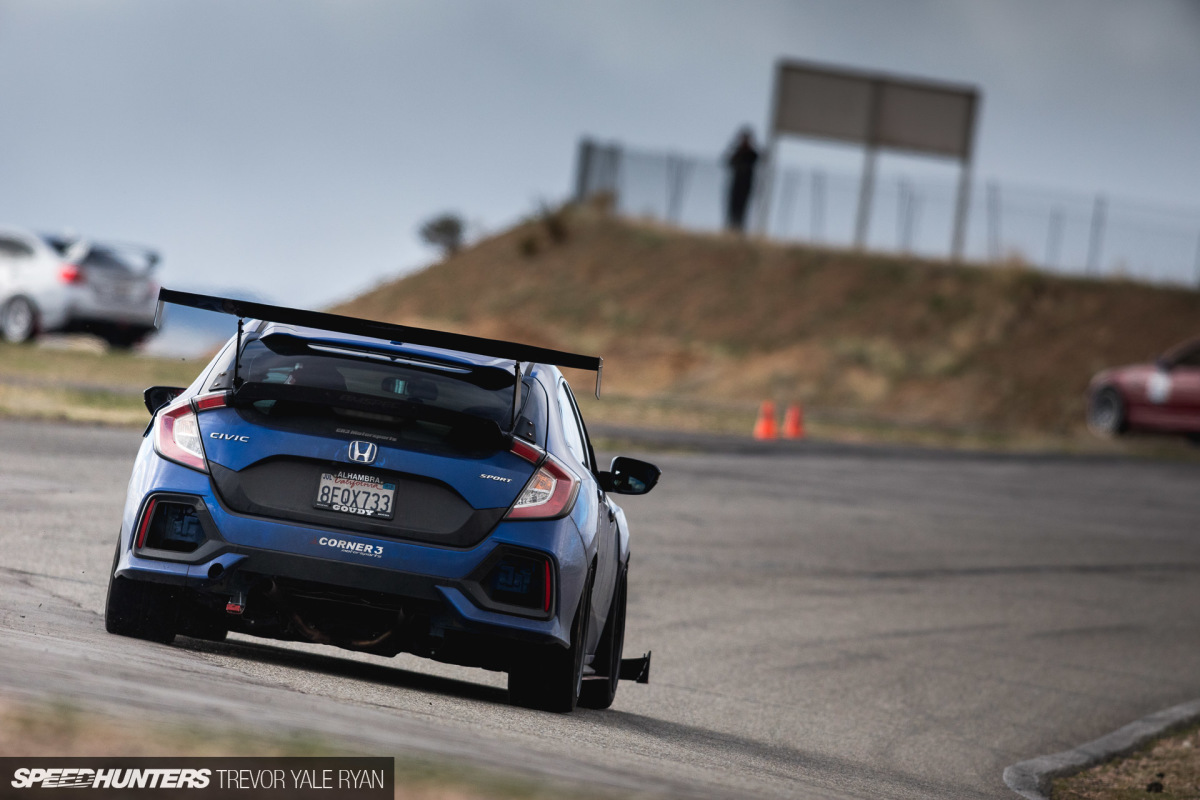
By using the air passing over and under you to shove your car into the ground, that limit is stretched as far as is possibly can be. It’s common sense, but the side effect of this is that the car is much more prone to snapping on the driver.


The car makes use of extensive aero upgrades including a BMSPEC front splitter prototype (which includes shocks rather than standard support rods to help absorb any blows on the street), version 2.1 of their GT wing, their standard DIY-style side skirts, and a BMSPEC spoiler extension.

And the bendy bit the splitter does on track? “It doesn’t reduce downforce, I’ll tell you that,” Brian replied. His basic response was, “it doesn’t oscillate, so having a part of it lower to the ground is not a bad thing.”

From the sidelines it seemed that Jackie Ding — who was driving the car for the Gridlife TrackBattle bracket competition — was flirting with the limit all day, so after the fact I asked about how the car actually felt at speed.
He laughed and said, “The Civic can get real rowdy; the rear was always moving around a little, but just by trusting the front end and keeping the throttle pinned I could keep the nose pointed in the right direction.”
From the cockpit on Jackie’s fast lap, it looks decidedly more tame than from outside.
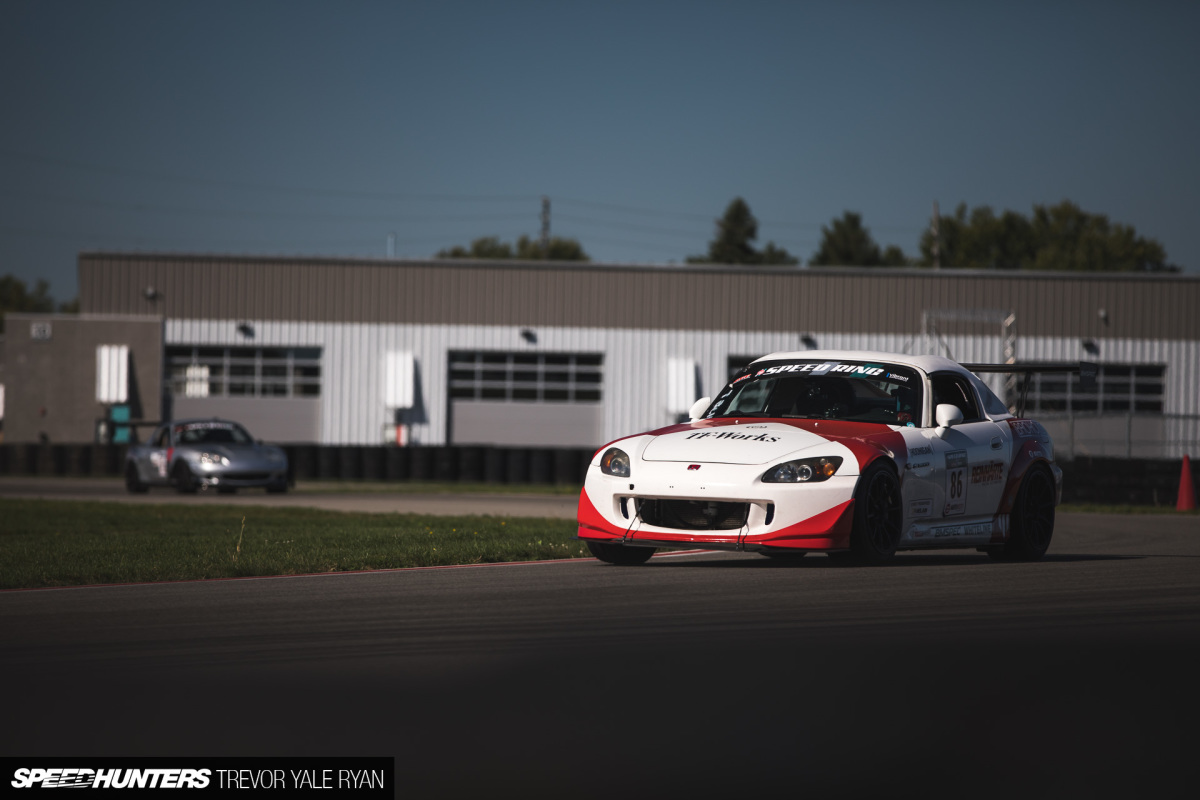
If you aren’t familiar, Jackie is known for driving his own Honda S2000 on the limit. His S2000 — prepped for the Street class in Global Time Attack (and Street Modified for Gridlife’s series) — runs similar BMSPEC aero, and is a car that Jackie feels very much at home in.
And while Jackie is a diehard RWD guy, he knows full well how potent a FWD car can be. “I think the results in the time attack world are speaking for themselves. Properly set up, FF is just as fast — maybe faster — than anything else.”
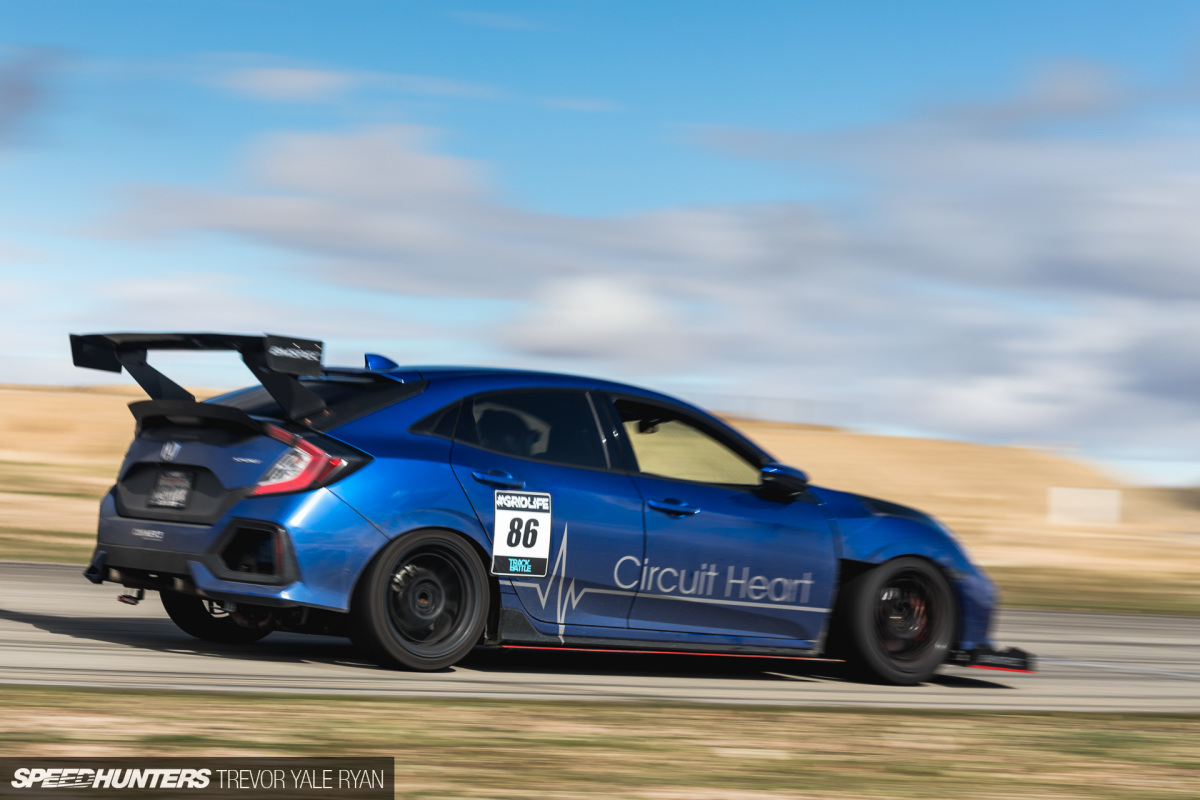

He also admits that the FF layout seemed to be easier to drive once he began to understand it. For his first outing at Streets of Willows during the Civic’s first shakedown, a lap time of 1:24.087 is properly quick and was third fastest in their class.
This is more impressive given that the team were struggling with fueling issues at high RPM throughout the weekend, and Jackie only had half a dozen laps of the new-to-him car and track to set his time.

Unfortunately, the BMSPEC team couldn’t overcome these fueling issues (where the ECU would entirely cut fuel delivery, resulting in Jackie being reduced to a speck in the background while the Mustang marched on) during the bracket-style shootout at Streets of Willows, and being eliminated after their first matchup following a ‘one more time’ battle.
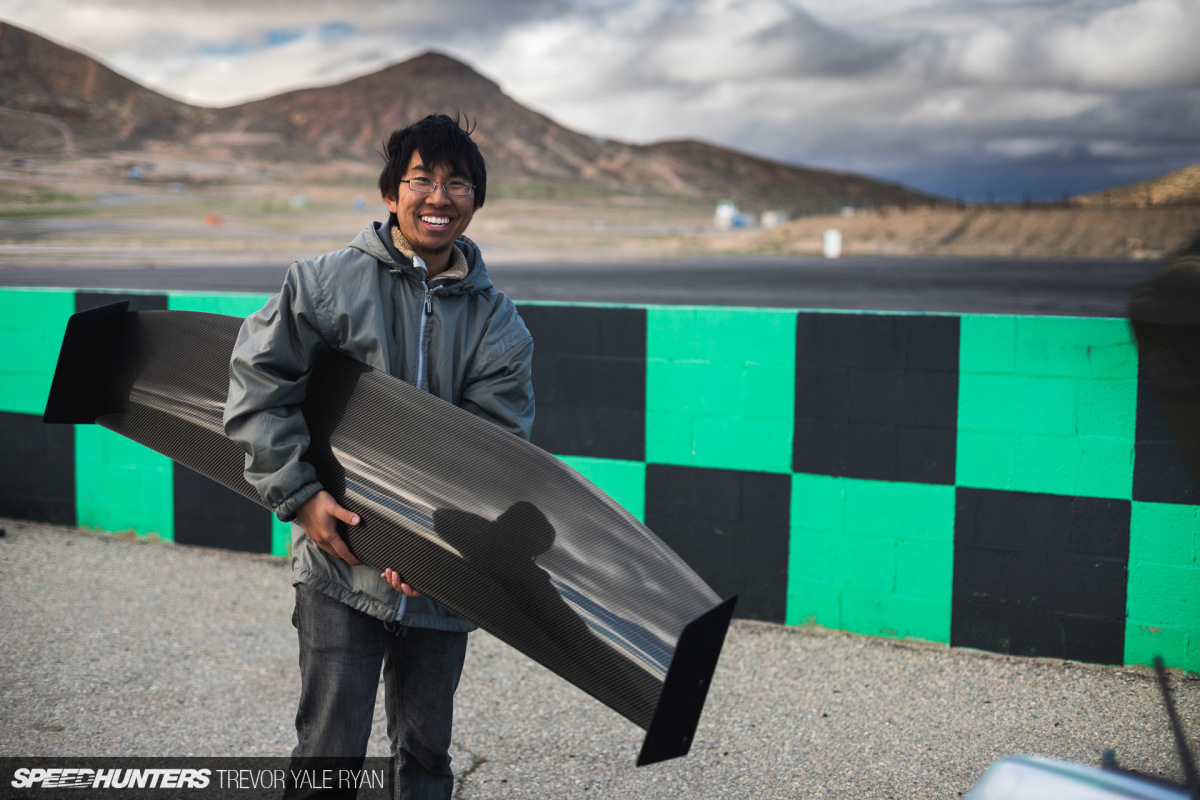
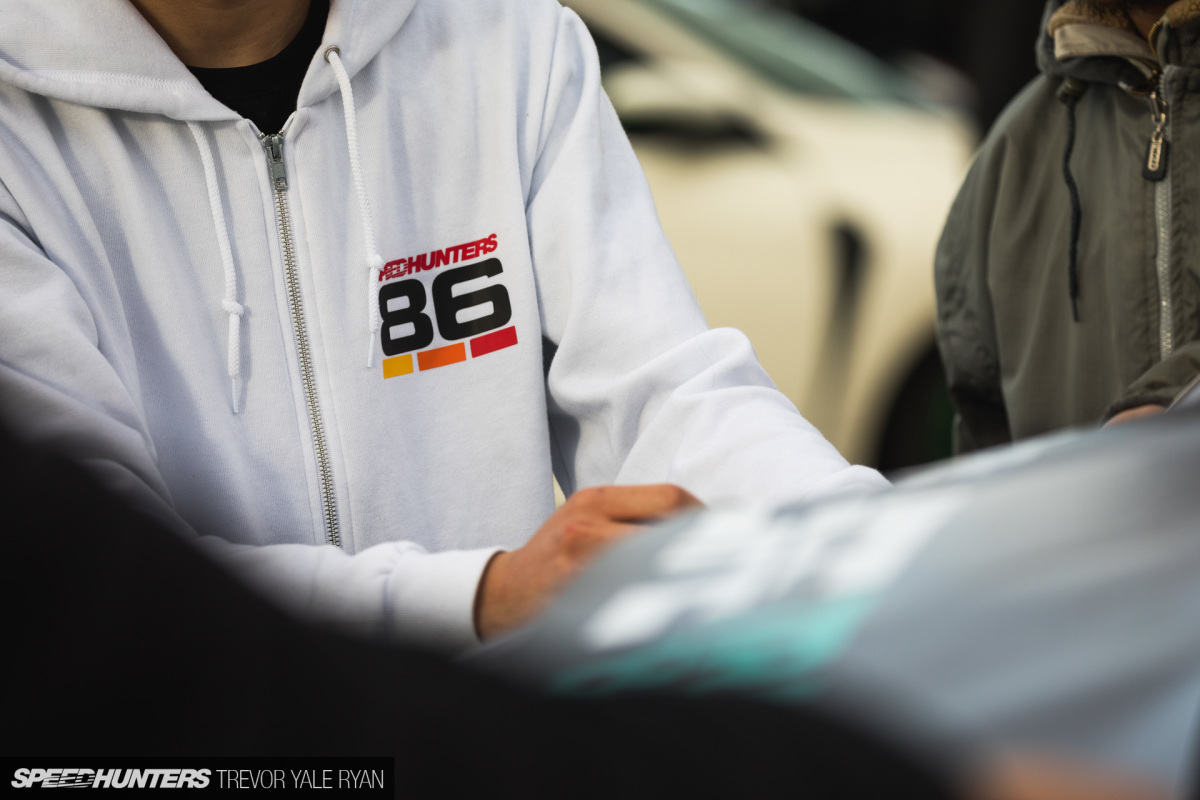
There were plenty of highs and lows throughout the weekend and the team worked endlessly to keep the car in the running, but ultimately it was a solid team-building exercise for Brian, Jackie, and Rainer (pictured here sleeping and celebrating). And Jackie got his first taste of country fried steak after a long day at the track — which he “enjoyed very much,” before hopping on a red eye to Detroit for class the next morning. You can watch his entire weekend recap on YouTube here.
Long story short, nothing with cars ever comes easy.

But to prove there’s a lot left on the table for the Civic, Honda factory racer Tom O’Gorman from TOMO Racing, and the 2018 PWC TCA champion, went out for a few laps in Circuit Heart and bested Jackie’s time.
With some tuning, tweaking, and more seat time I expect the Civic to become incredibly competitive in Jackie’s hands, but only time will really tell how high the ceiling is for this car.
Street & Track
So, the car clearly works well on the track and has potential to be competitive in its class. But does it work on the street?
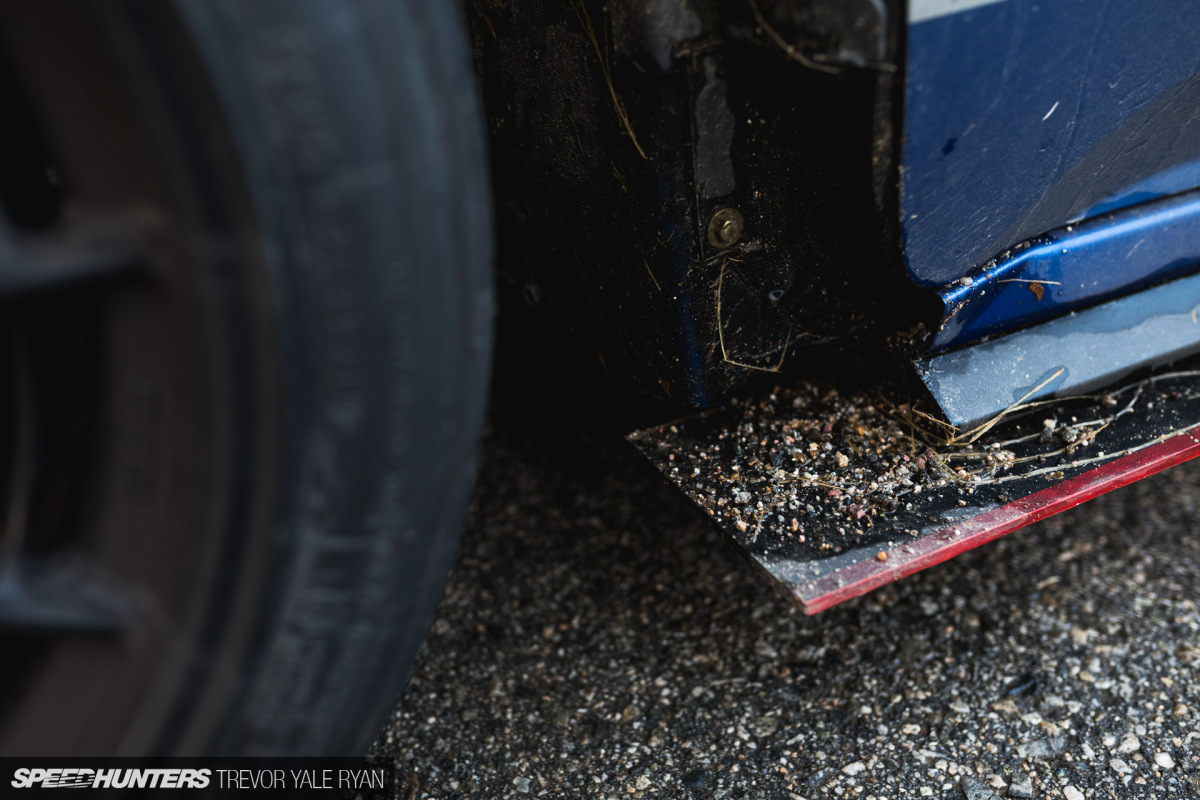
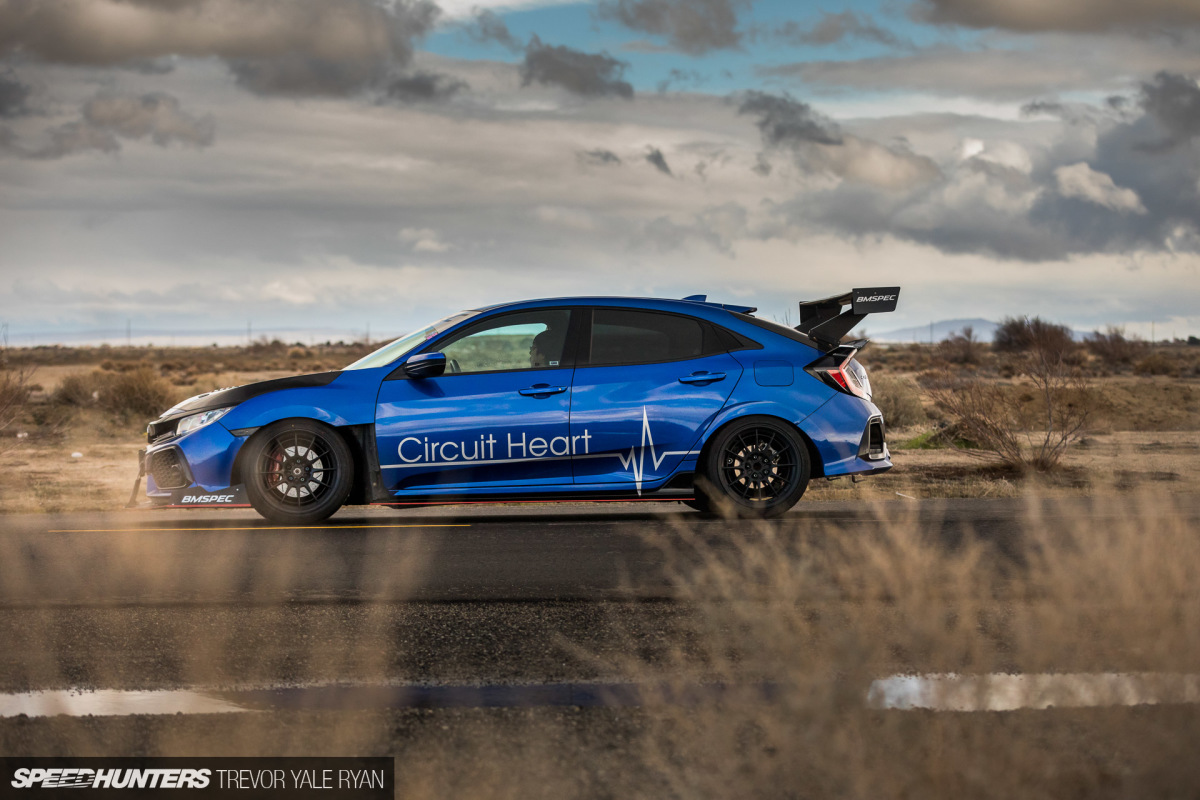
The answer is yes; it should be no surprise that the big-winged Civic was actually very reasonable to drive in a day-to-day setting. Brian says the original BMSPEC car — the Mazda3 I mentioned earlier which has since been dismantled to make way for the Civic — “was a daily driver, parts hauler, track car, and an occasional show car. It had to do all things well, so we simply made it do all things well.”
In an age where this seems to be the expectation, BMSPEC is filling this niche in the market by making parts which can indeed do everything, all at a reasonable price.
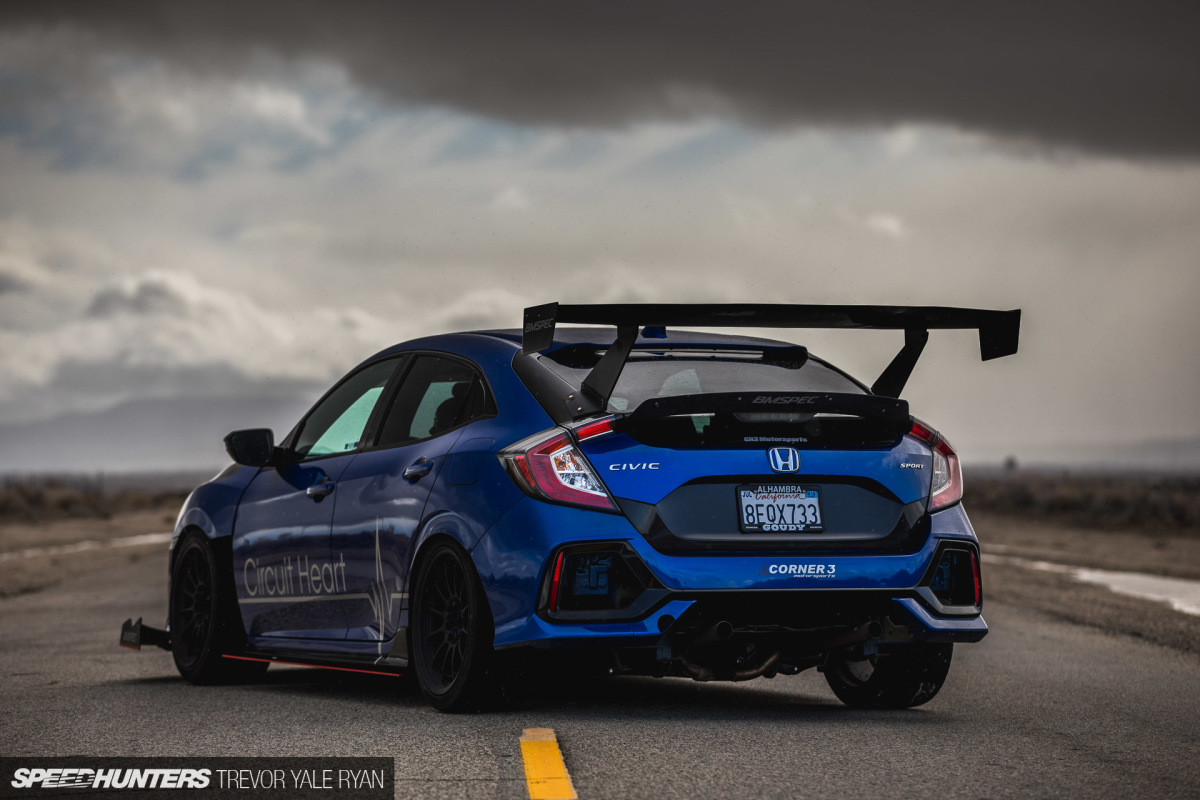
And, not to start another debate with a panel of enthusiastic internet scientists, but both in simulation and in practice a number of the aero parts Brian designs and makes actually increase your mileage on a tank of gas — SCIENCE! — making these parts more than reasonable for a daily driver or weekend warrior alike.
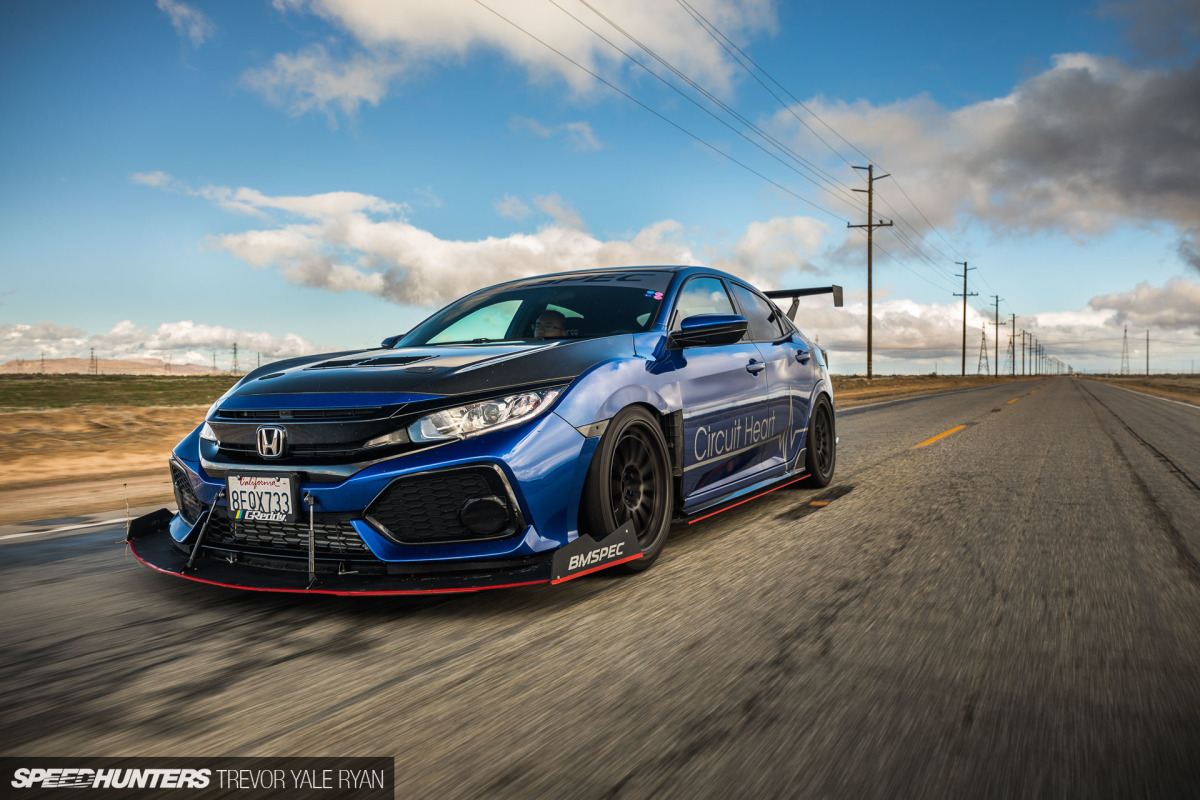
Beyond the standard issues which come from driving a low car, think angling into driveways and the like, the BMSPEC Civic was simple and straightforward to pilot to Los Angeles and back.
The car also showed great potential at the track, and Brian says that their concept is finally becoming a reality. It all started with his Mazda, though, as Brian simply states “the evolution of the designs on that car led to where we are today.”
Brian smiles when he says this knowing that — even years in the making — his 2018 Civic is only just the beginning for BMSPEC.
Trevor Yale Ryan
trevor@speedhunters.com
Instagram: tyrphoto
TYRphoto.com

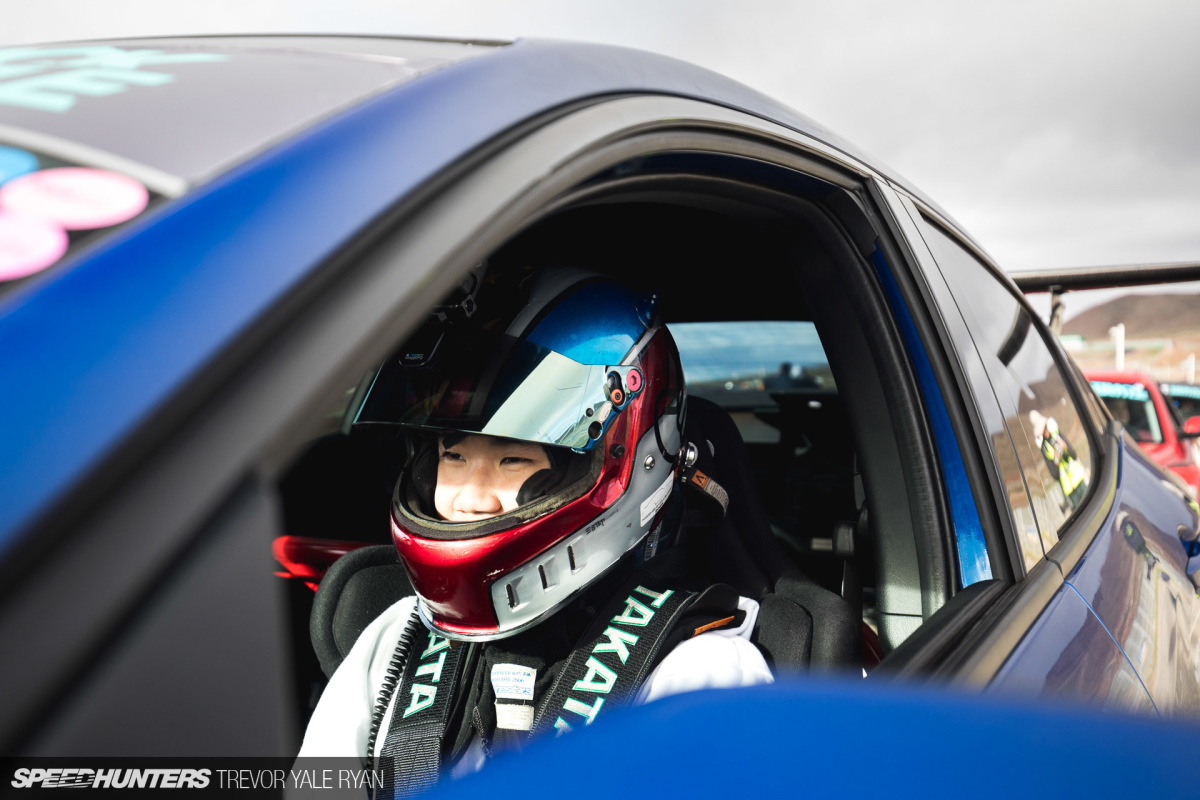

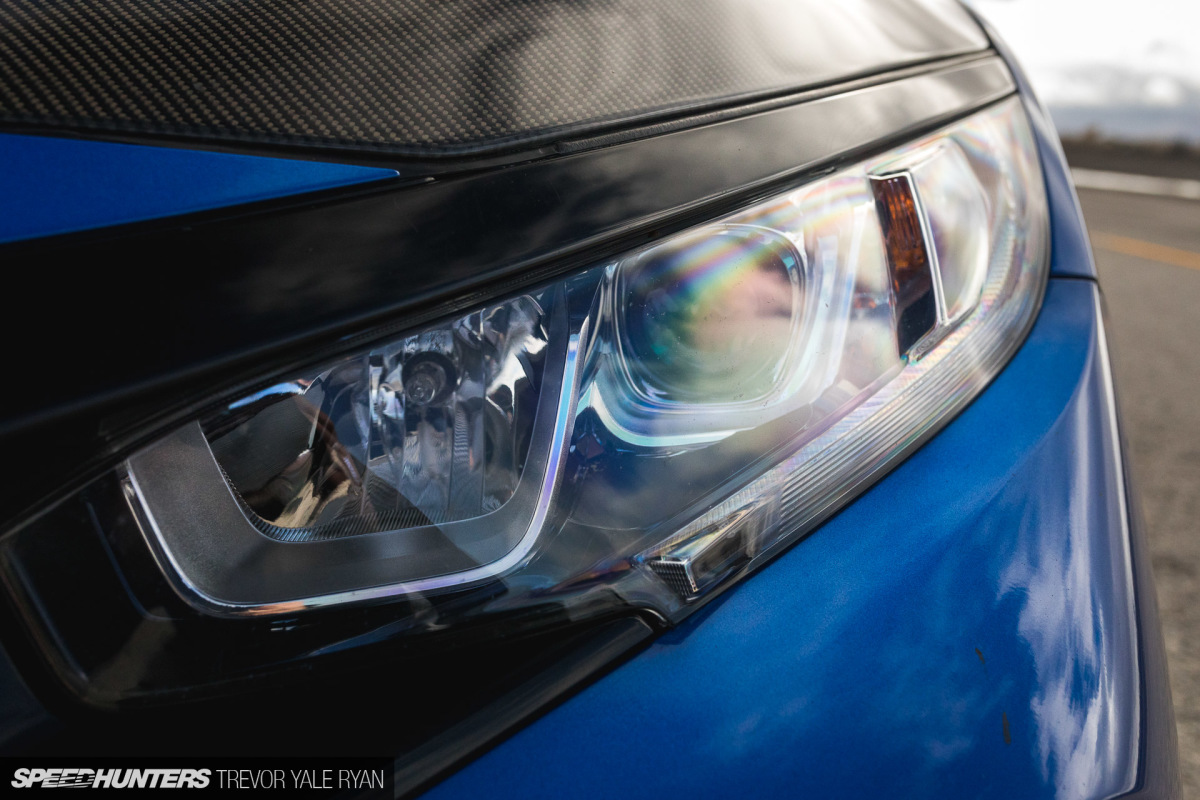
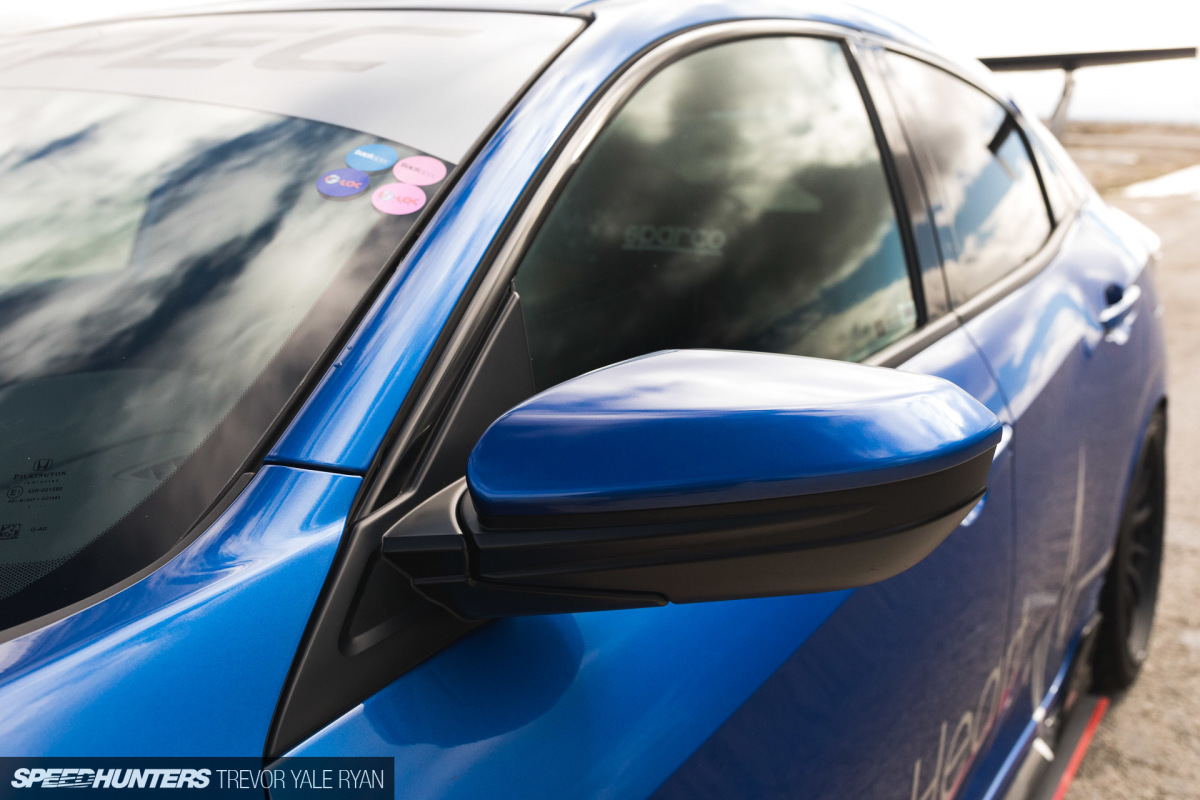
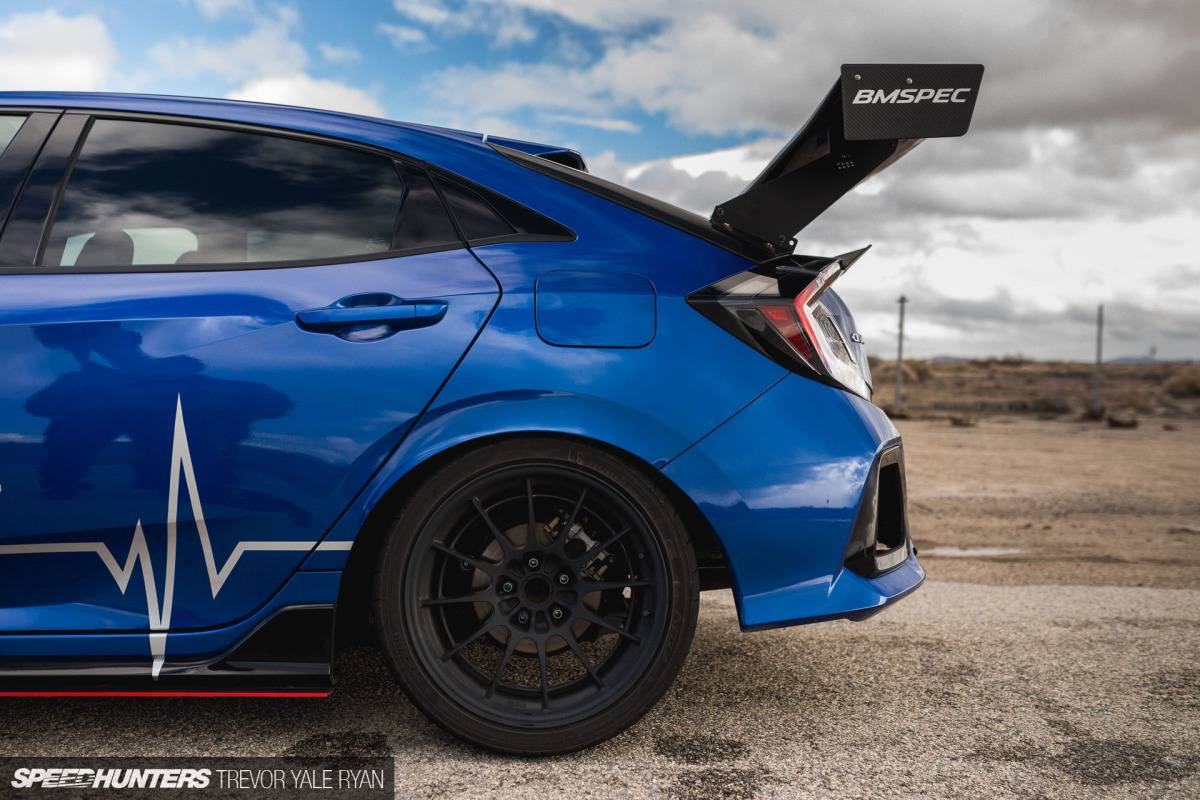
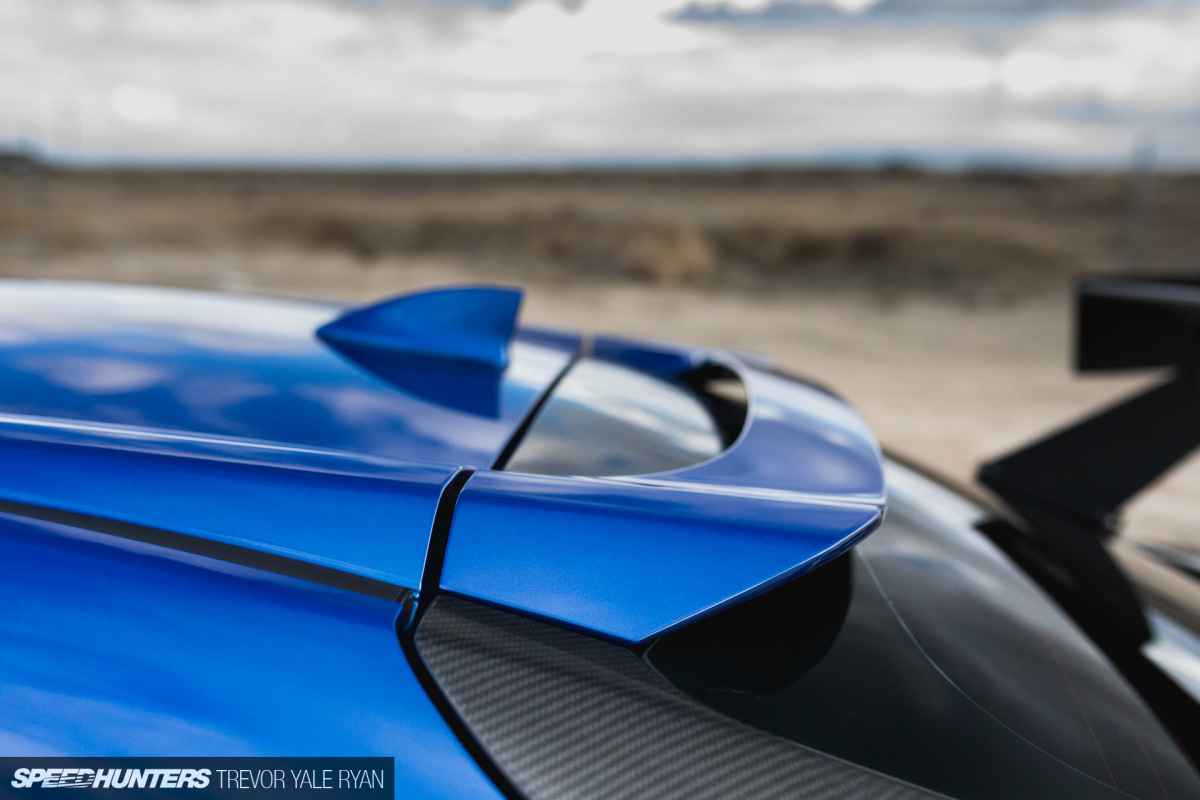
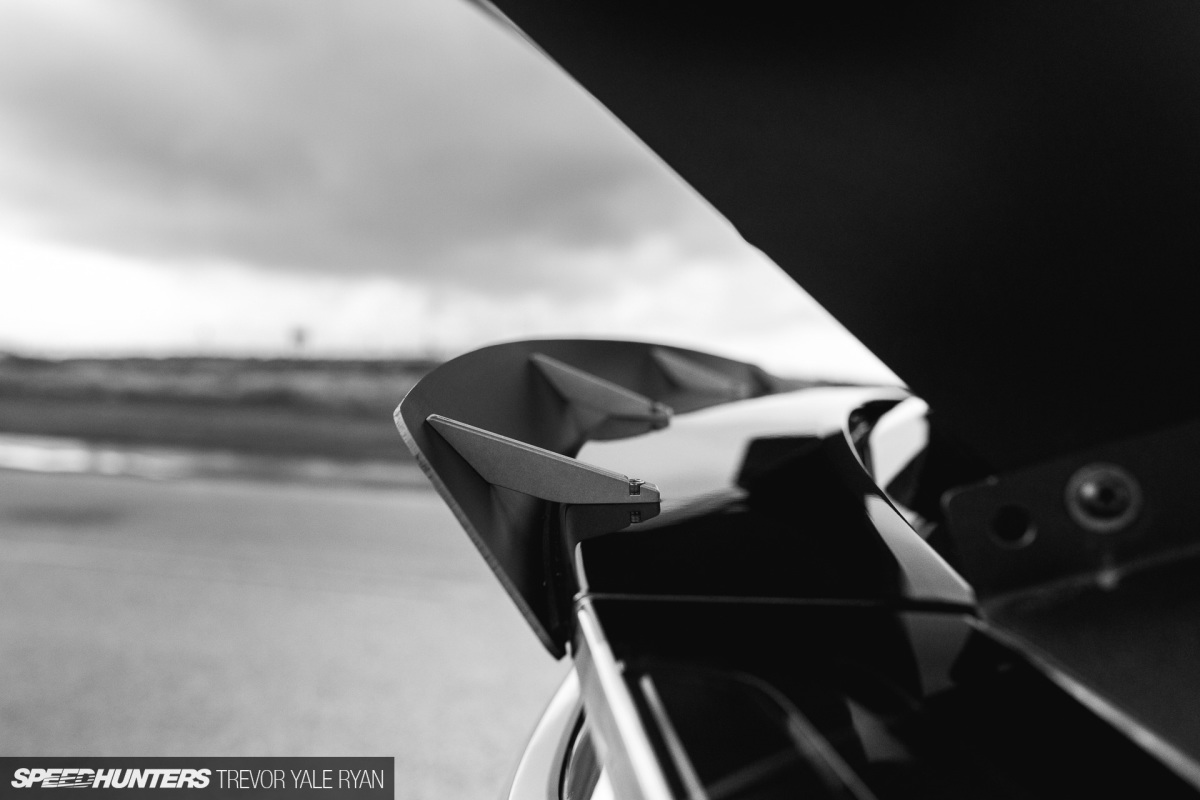
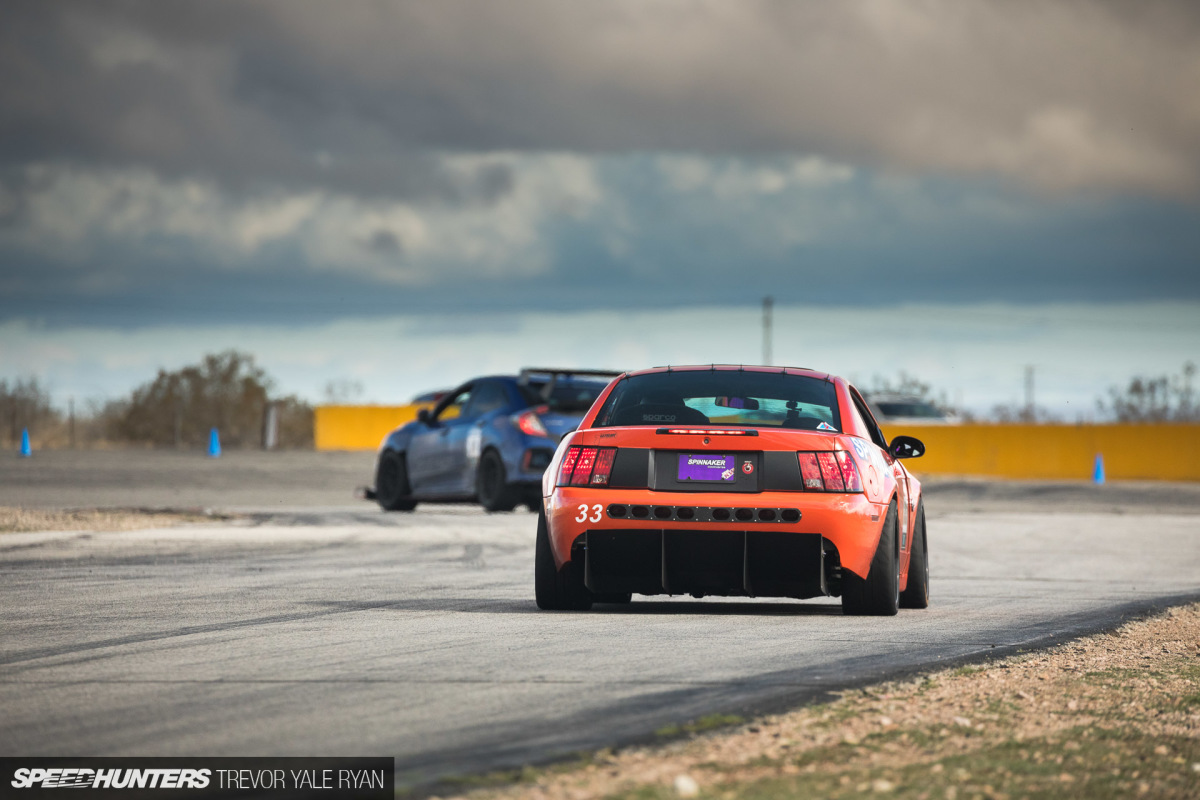
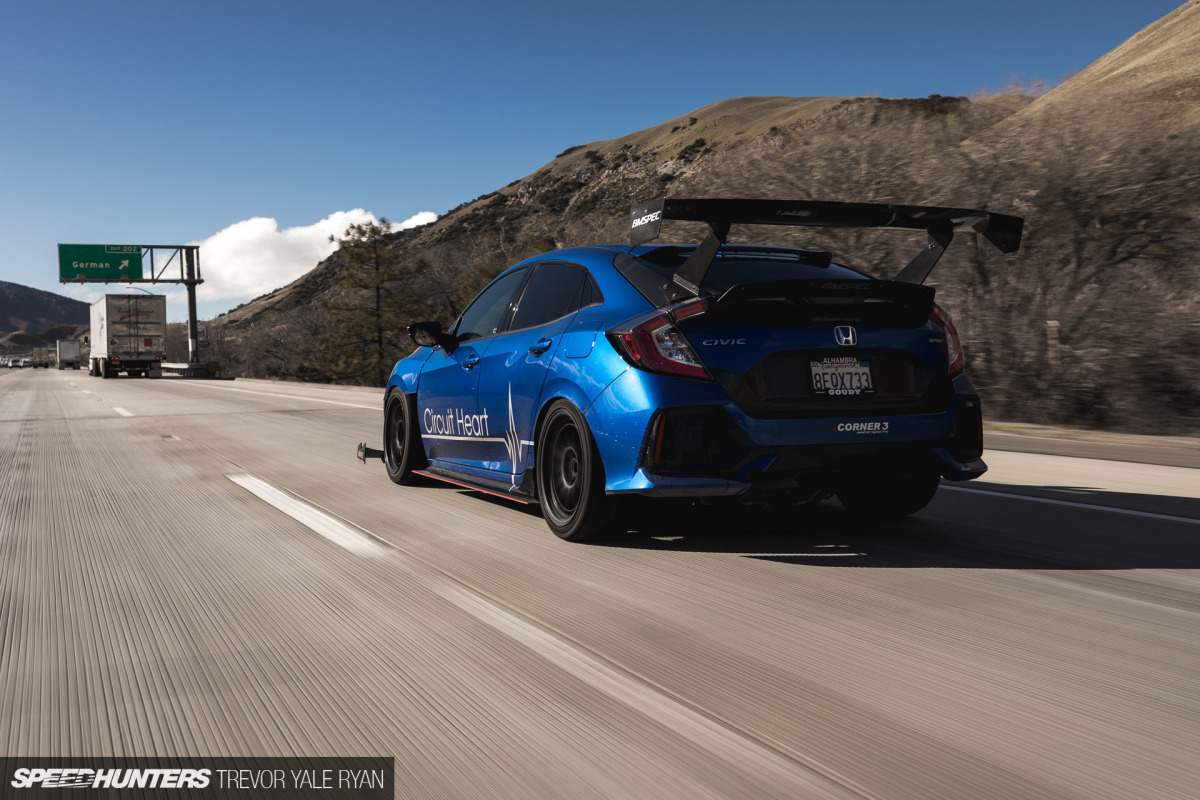
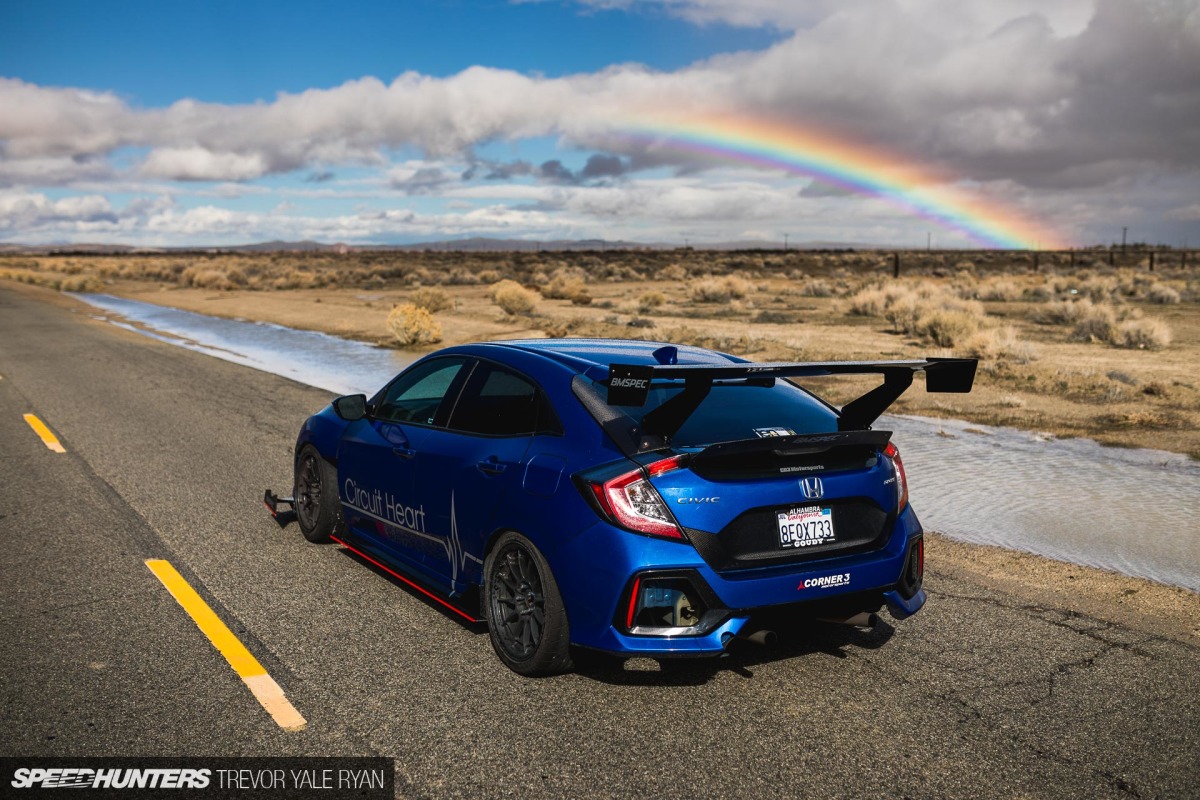




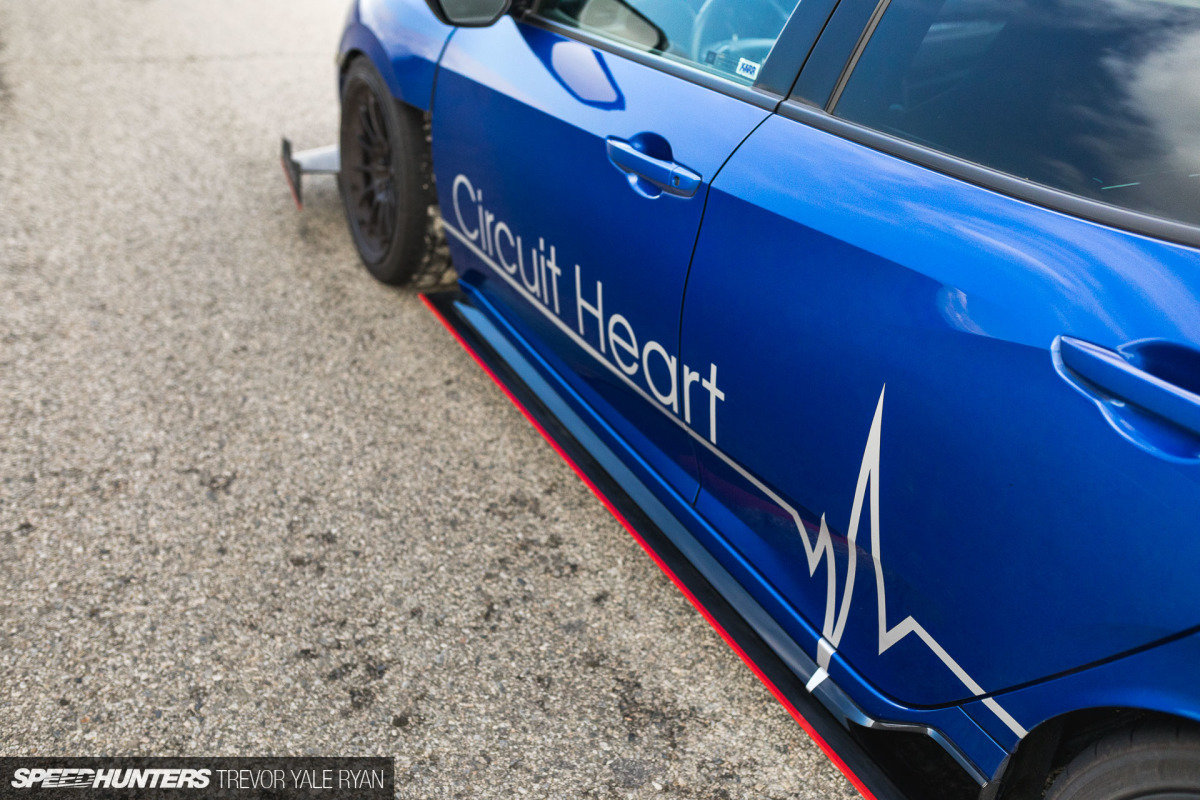
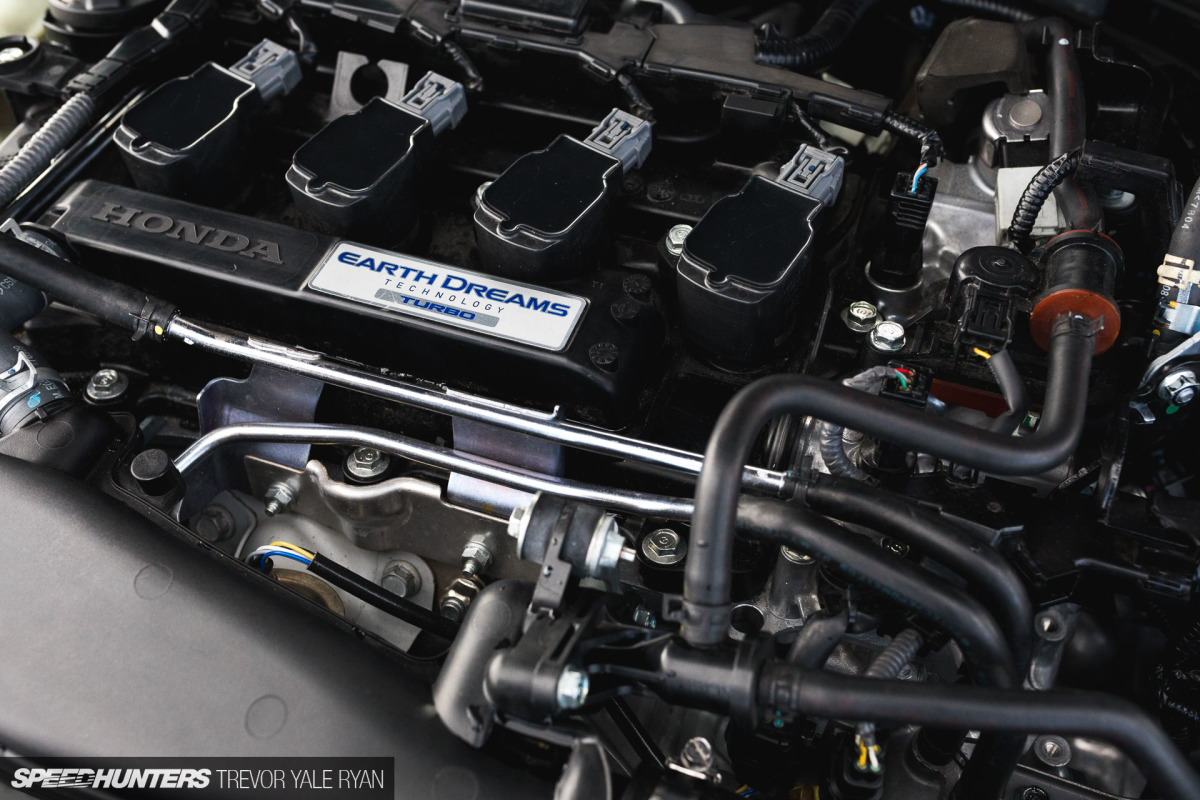
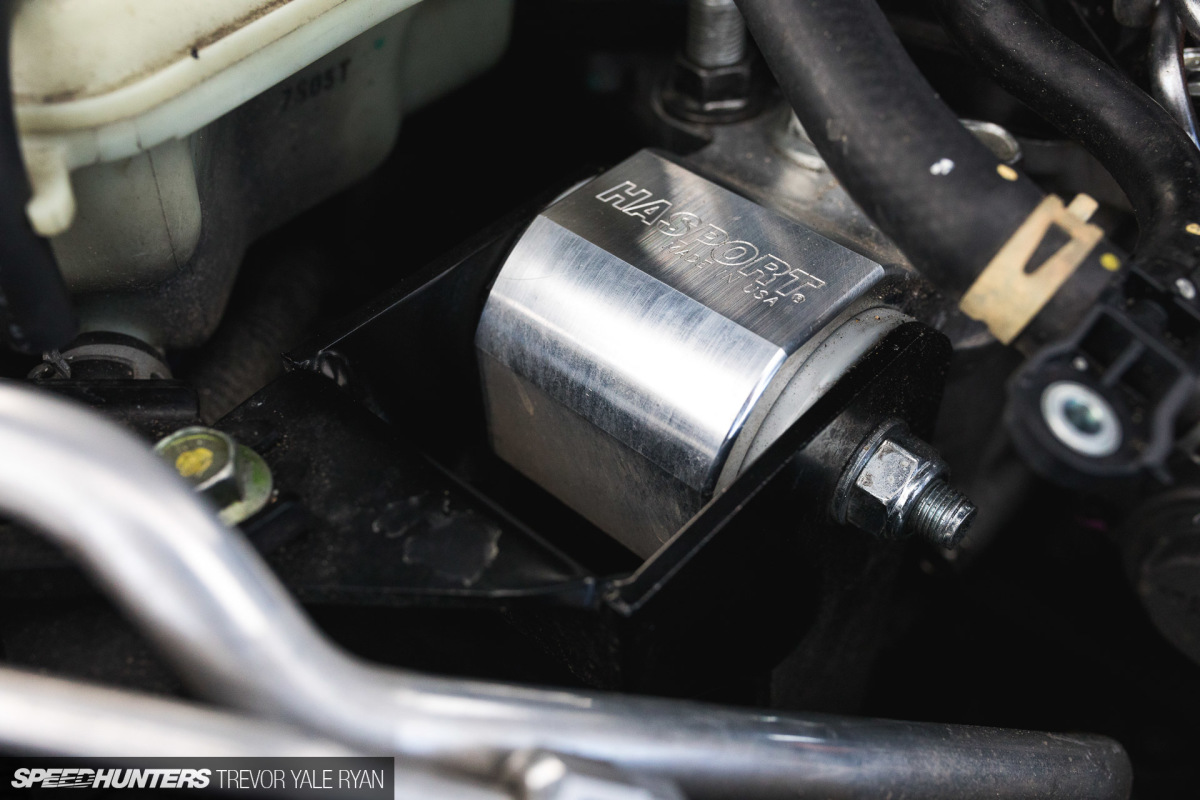
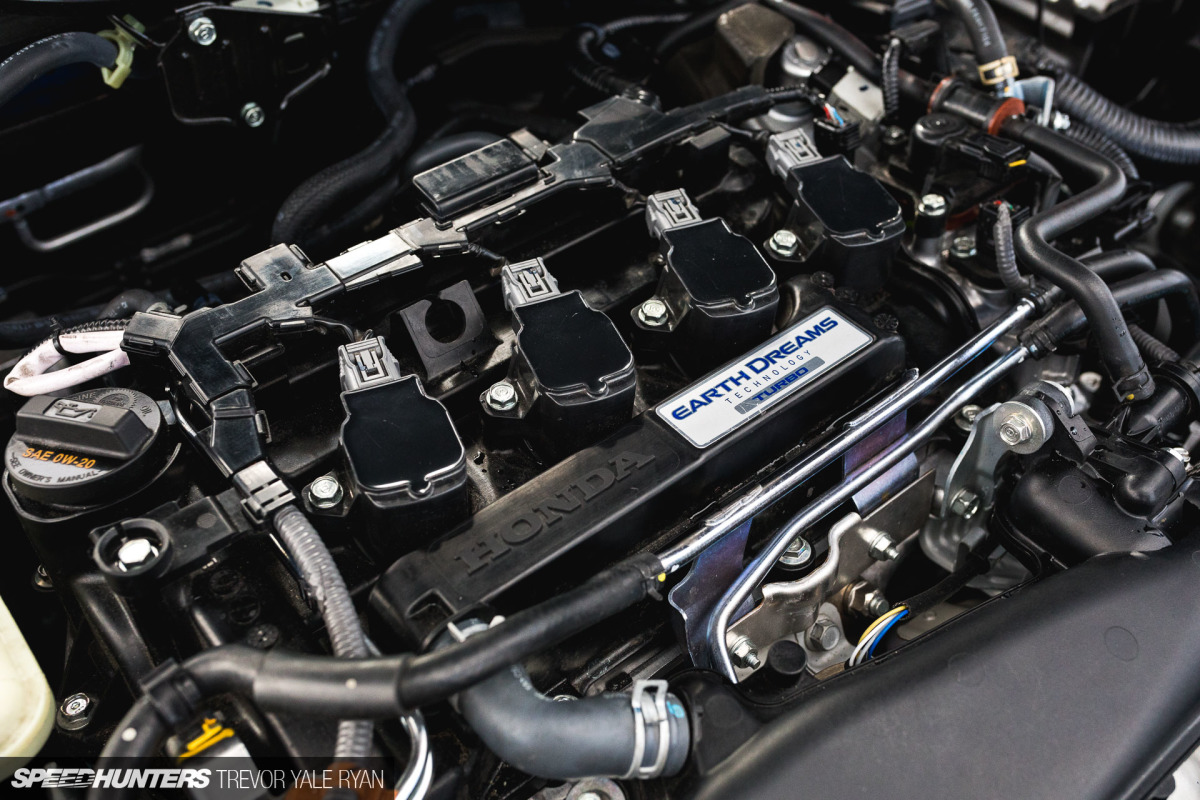

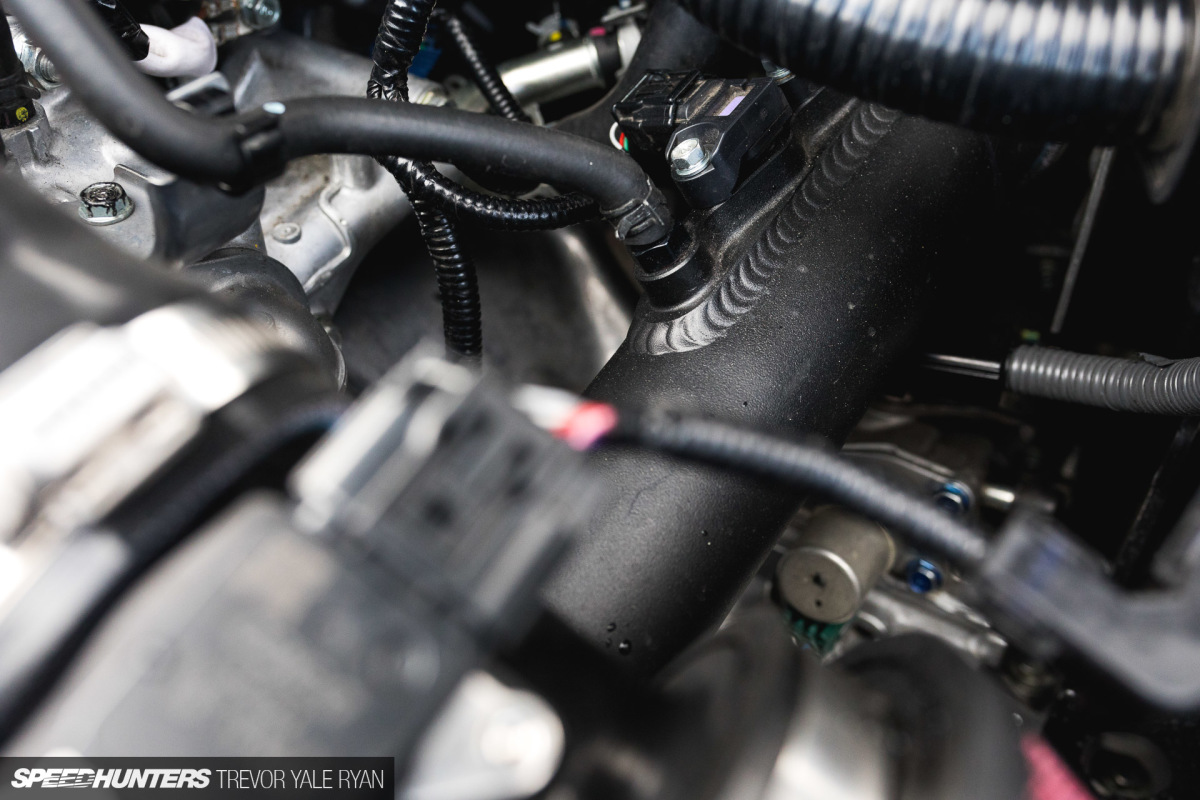
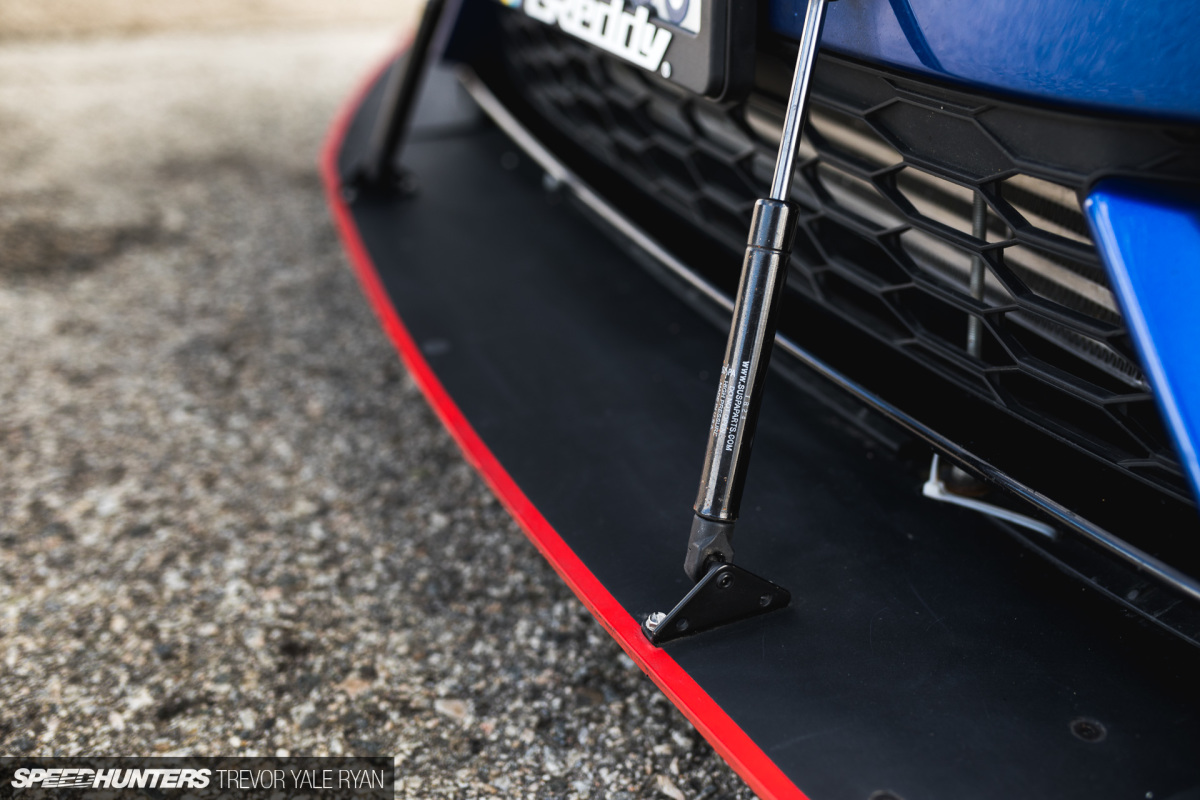
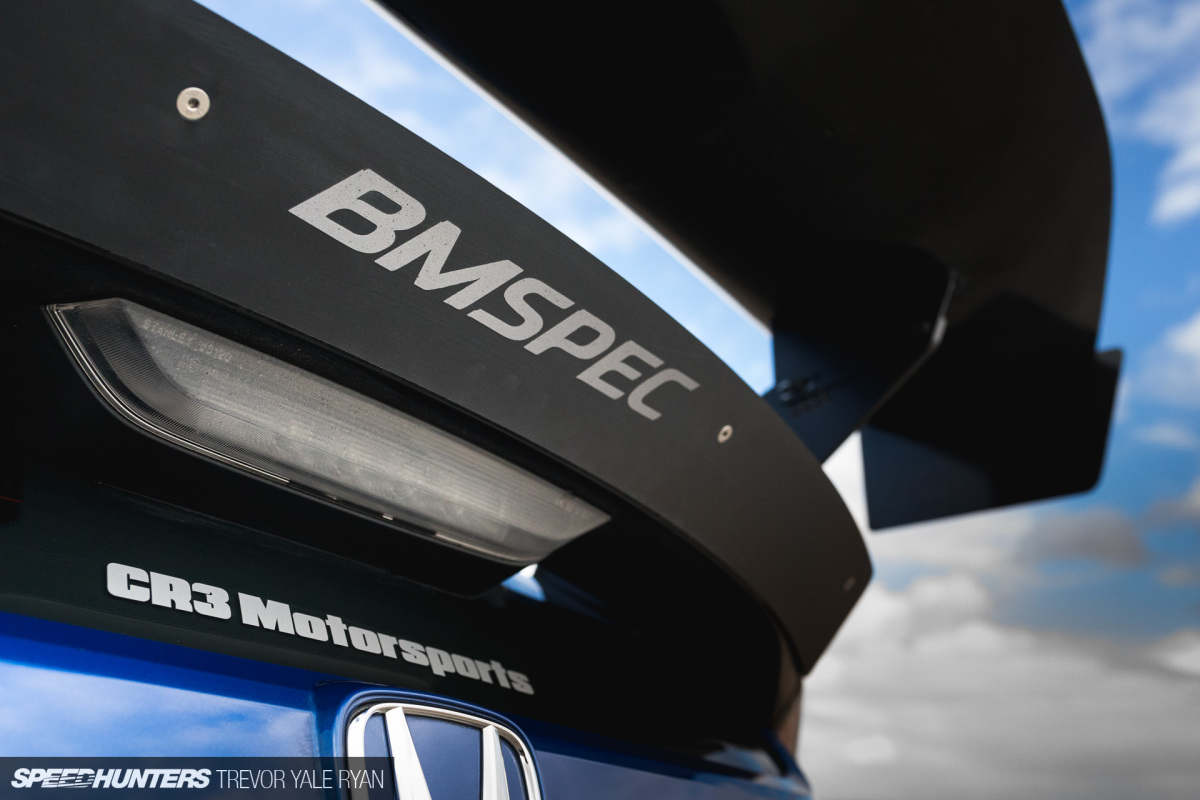
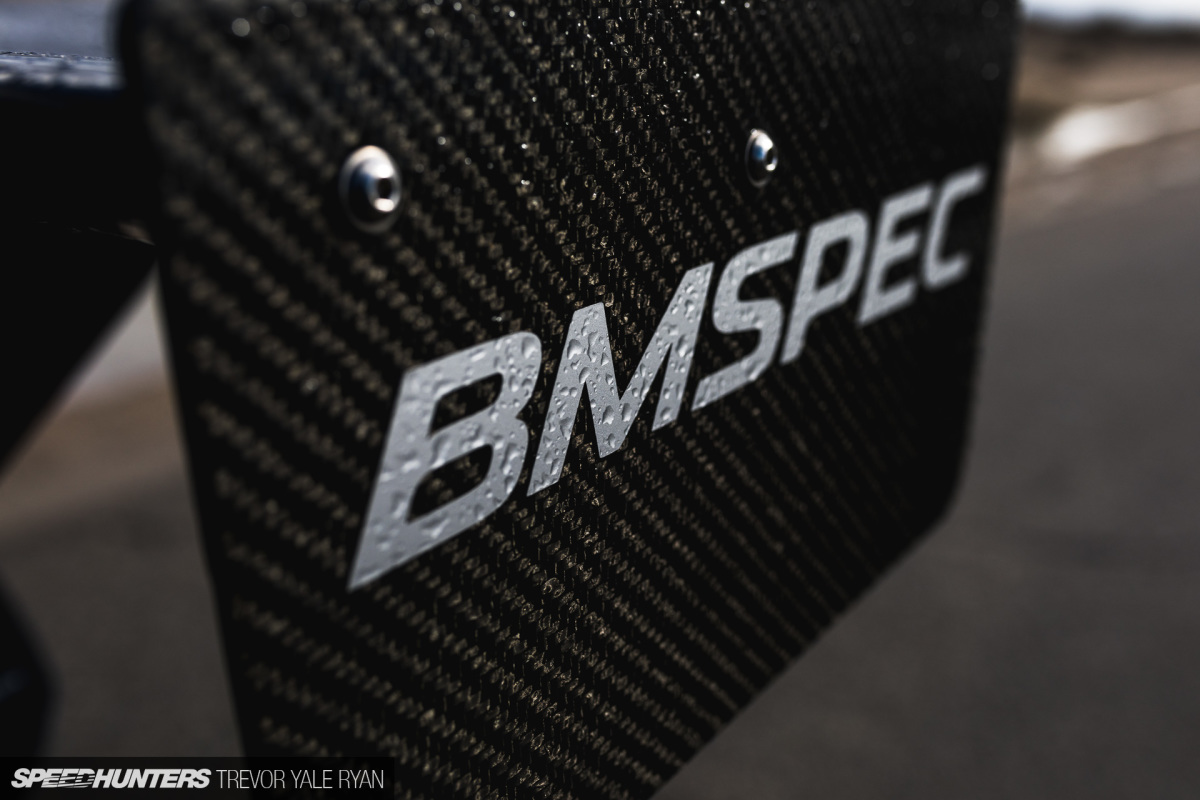
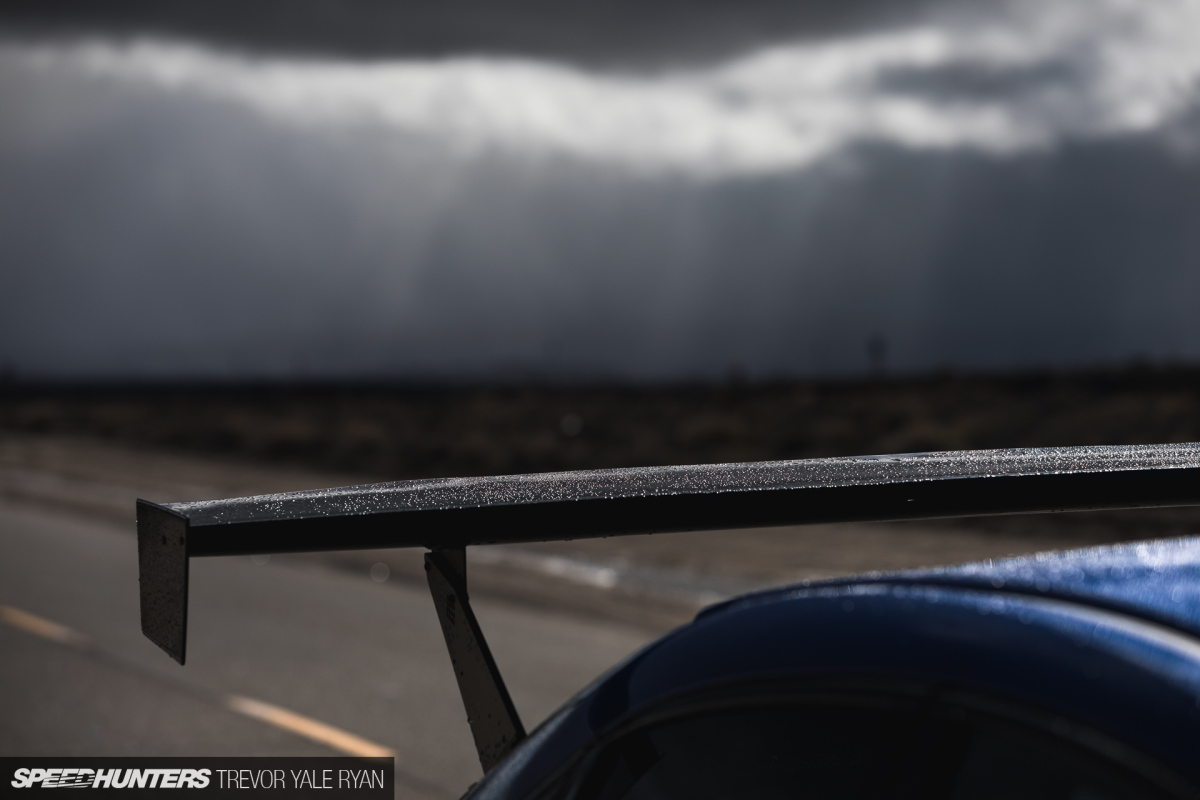
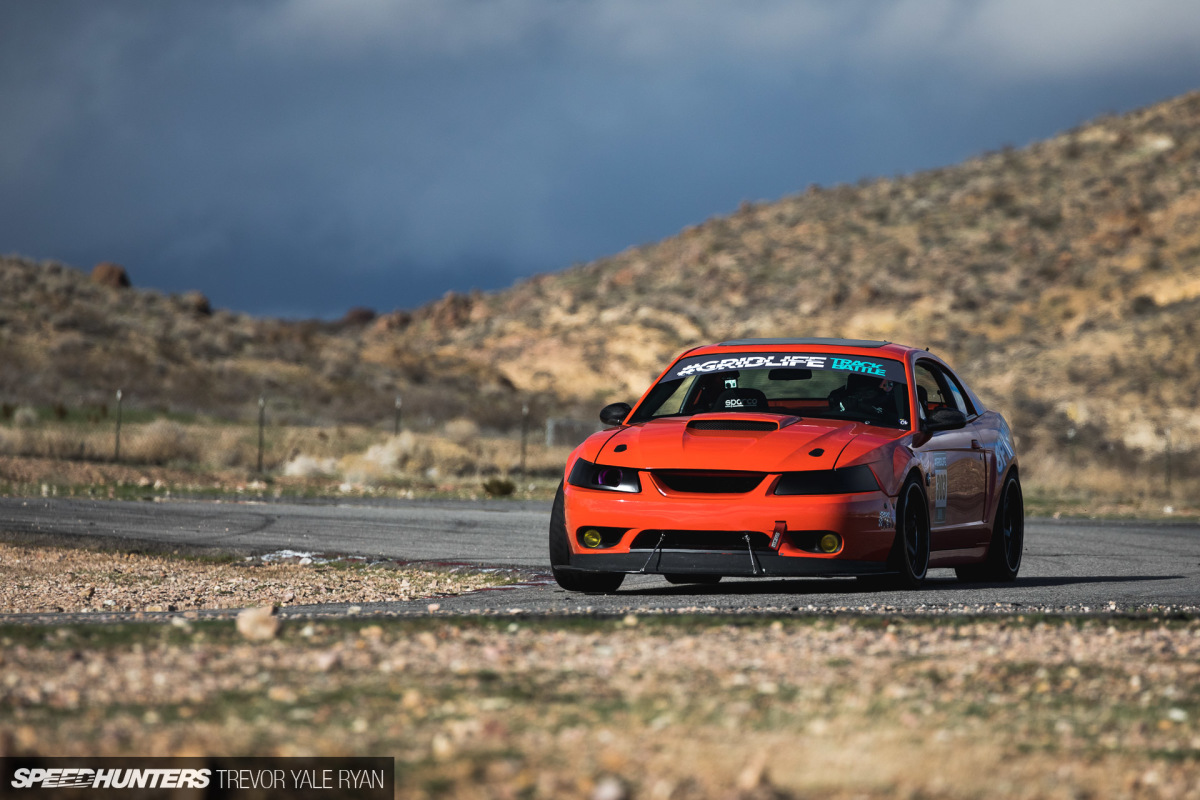






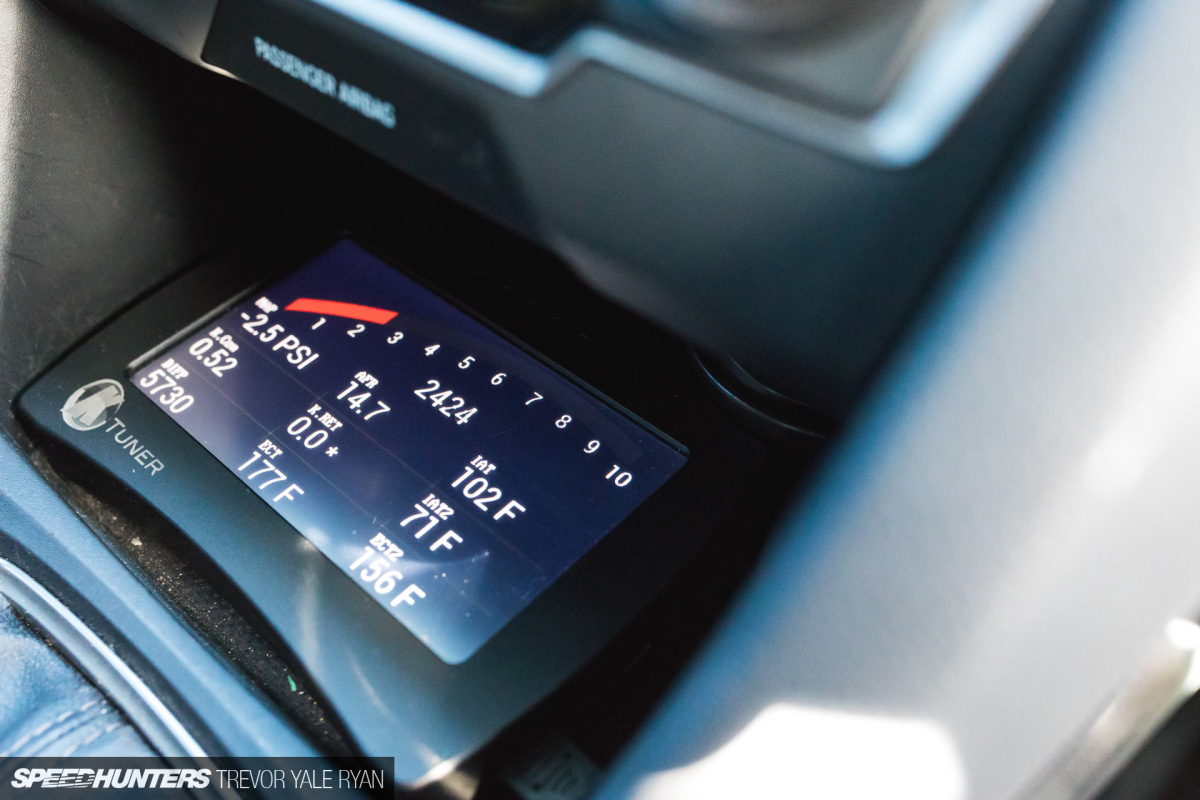
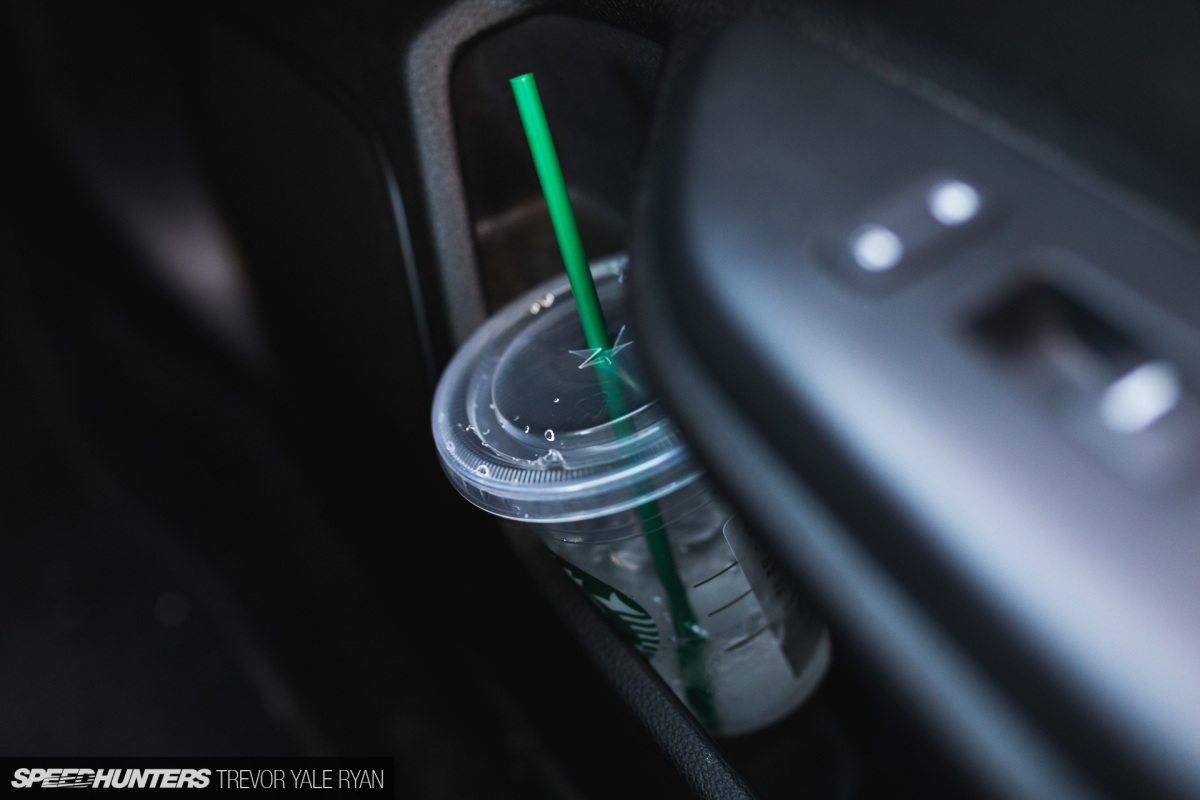





It is SCIENTIFICALLY impossible to increase drag and decrease fuel consumption.
There are parts like a flat underbody, a reasonable sized splitter, a rear or front diffuser, wheel spats, vortex generators and appropriately sized spoilers or Gurney flaps that CAN decrease lift and improve fuel economy but 9/10 nobody buys or designs that stuff because you can't show it off the way you can with a big, dumb drag inducing wing rear wing.
Sadly, most popular aero is for show and not go. BTW, I see so many dumb wings on the street and the drivers don't seem to realize that they must approach 100mph to get real, noticable DF. How many kids have the gonads to drive at those speeds around blind corners. You would have to go to Willow Springs to make use of it, and all other roads you just have an expensive piece of carbon costing you buckets of duckets. Considering the insane price of gas in Cali, I just don't see how that is worth it.
BTW, Ferrari hasn't had a rear wing in like ten years or more. Y'think the kids would notice by now. I mean, take a cue from the A90 Supra, guys. And girls.
But what if... it doesn't increase drag?
Anyway, crazy that you were able to do extensive CFD simulation and real world analysis on these very specific parts just by reading this article.
Lmao @ Ferrari hasn't had a rear wing in ten years or more. You know the difference between a street car and a track car correct?
Lmao @ wings need to approach 100mph to get real, noticeable DF. You sound like every other non-engineer internet racing enthusiast rn. Wings are adjusted/designed to produce downforce at their most common use cases to optimize for expected speed. To say "must approach 100 mph" frankly shows a huge misunderstanding of the purpose and effectiveness of downforce at any speed. Most popular aero is actually designed for downforce, most users just leave it on the lowest setting and never bother to change it. That's the difference.
Great read! And awesome photos Trevor! Makes me want a Honda hatch all over again!
Thanks! My first car was a Civic hatch, definitely miss that thing...
What a Great Car set up you got there.
People will be enjoying that aftermarket parts.
Because it is generally accepted that you cannot produce an appreciable amount of downforce without producing some drag.
Now there are ways to create downforce via undebody (splitter, flat floor etc), that produce very minimal or even reduce the amount of drag.
But at least as far as wings go, it's basically impossible to produce downforce without drag. At least I haven't read any papers or seen any data to prove me otherwise.
As far as BMSPEC goes, I can't find any actual data provided on their site to back up their claims, other than some rough CFD images with no scales shown on their tech page. On an item page for one of their wings it says "See CFD data here" and yet that link is not clickable and we cannot see their cfd data.
Rear spoilers, such as a duckbill spoiler can reduce drag and rear end lift, but at least for wings, I really don't think it's happening.
I haven't read any papers to prove otherwise and BMSPEC hasn't shown anything to back up that claim. I'm sure their products are great, and I'd love to see if they have mad a breakthrough in aero design, but I'd also like the claims to be backed up.
and before anyone says "How do you know armchair engineer". My source is being an aerospace engineer myself.
Alsx,

I agree with you, aero add-ons on their own, will of course make drag. The fun part though, is in finding interactions between the car body and the add-ons in order to find a narrow sweet spot where the total package (car + aero bits) doesn't have any more drag, or has very little additional drag vs. the original (car only).
While our website's still kinda shitty, I have posted CFD data on the wing alone to our social media (BMSPEC on Facebook or @bmspec on IG) and we have also posted dev progress on Circuit Heart showing some of the MPG-based testing we do. We focused heavily on preserving the original fuel consumption before aero (about 40mpg at 75mph on a flat highway) while adding front splitter and rear wing; no other changes, no tune, no tricks. The results of that test were posted on Sept 28, 2018 if you'd like to see.
There is no crazy aero breakthrough happening with our stuff - above highway speeds, the load from the downforce starts causing significantly more rolling resistance, interactions between body and add-ons change, etc. and I don't think I can maintain drag neutrality at much higher speeds than, say, 100mph. But practically speaking, I'll take what we can get, so if I can maintain mpg at all daily usage speeds (let's say, 0-80mph), that's what we'll do, and release.
As another example, with Jackie's S2000 we grabbed GPS speed data from his Gridlife laps with our aero package vs. with a stock CR lip and wing. We found straight-line acceleration to be unchanged even at higher speeds, while corner apex speeds were up anywhere from 2-10mph. That's one data point in our favor. Highway MPG with our splitter + wing and a Mugen hardtop netted ~28mpg hwy, which IIRC falls on the high end of what S2000's can usually reach. That's two.
While there's no replacement for rigorous same-day A/B testing (which I'm doing right now with a new rear diffuser), all the scattered data points we have tell a consistent story so far. If nothing else, I have seen some other new brands claim some fabulous numbers in CFD but be unable to back it up with real-world performance; that's the exact opposite of what we do, we daily drive our shop cars in order to get as much data as we can on our product.
And yes, my background is also aerospace/mechanical haha, thanks to a stint designing for JPL and NASA.
I sincerely appreciate the reply.
Makes sense that as a total package with the hatchback that mpg can be maintained. I just was a bit skeptical of the improved mpg claim in the article.
I’m just a huge nerd for data and like to dive deep into that stuff when it’s available. So I appreciate the heads up of where to find it because you don’t owe us data or anything.
Either way, keep it up. Looks like you’re doing some pretty great stuff
Right. So like I said, "a number of the aero parts Brian designs and makes actually increase your mileage on a tank of gas." Ducktail for sure, certain versions of the splitter as well and underbody components which I'm not sure are yet for sale, and maybe the skirts in some conditions. Big wing, very seriously doubt it.
Which is exactly in line with what you've just said. Likewise, I haven't seen BMSPEC's data in detail but from a downforce perspective the results in terms of laptime speak for themselves. And I know plenty of people just running a ducktail from the company who certainly haven't had a hit in mileage. If I was to install the parts on my own car and run a story here, I would ask Brian for some hard numbers. But in this context it's his place to release what he wants, although it's fair to say the website isn't 100% so maybe he will do exactly that at some point.
And before anyone says "How do you know armchair engineer," my source is being a mechanical engineer myself ¯\_(ツ)_/¯
All show and no go springs to my mind here, especially with just 200hp, why does 200hp need 265 tyres?! I've got 400 in my Type R an running 245's.
Bradley, the car easily overheats 245's with the amount of cornering G's (we saw 1.76G at Gridlife, peaking to 1.99G) it generates. For lapping days where I want more laps (rather than one fast one), Circuit Heart even wears 295/30/18's. They get warm roughly 10 minutes in and that's where we stay until the engine overheats or the session gets called.
Wider tires aren't only for putting more power to the ground. They improve handling and raking as well.
Because the car was built in one week before an event meant to find kinks and test aero. Just so happened they were faster than plenty of 400hp cars, but that wasn't the point. Besides, Jackie still found a way to slide it lol